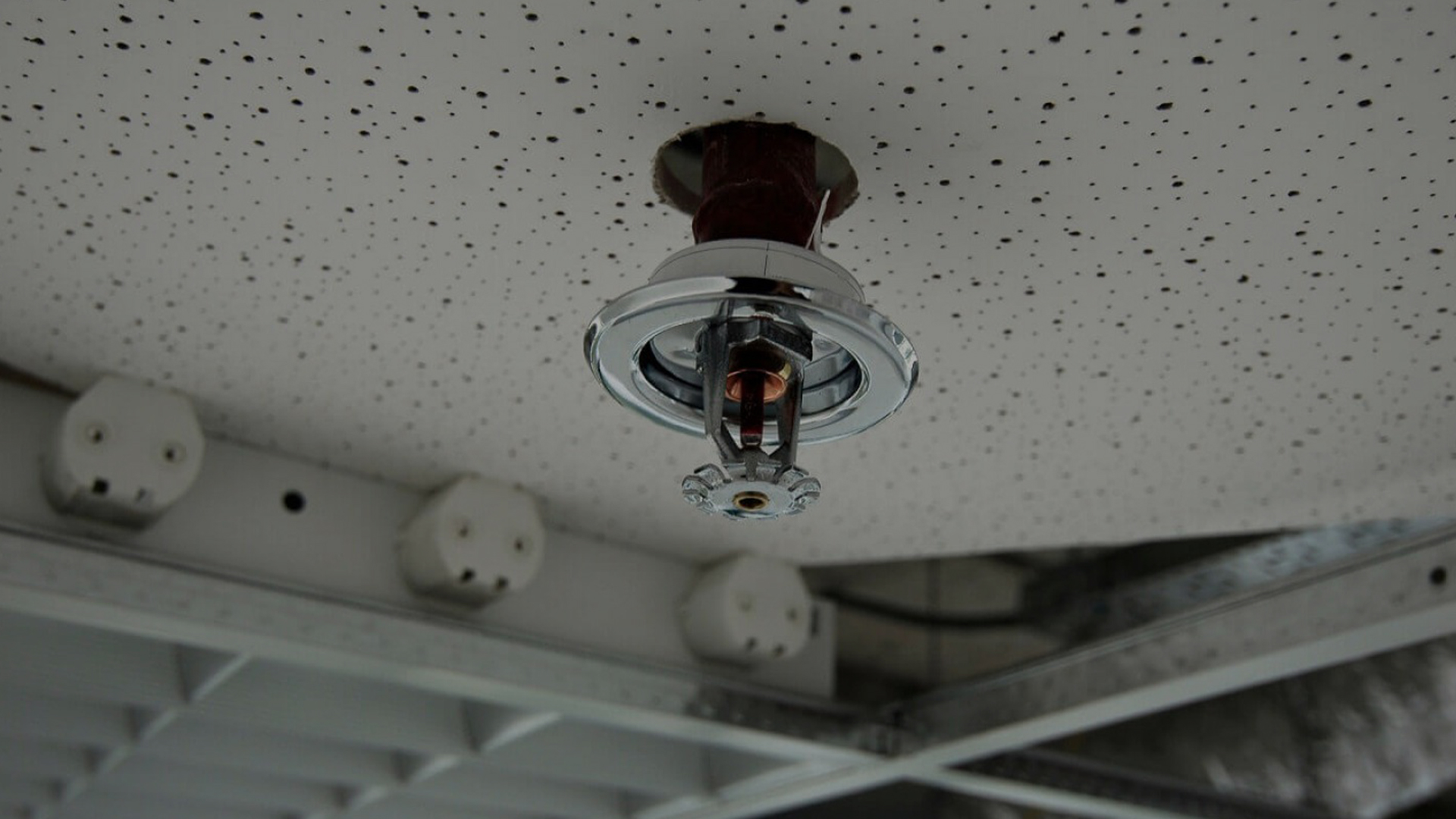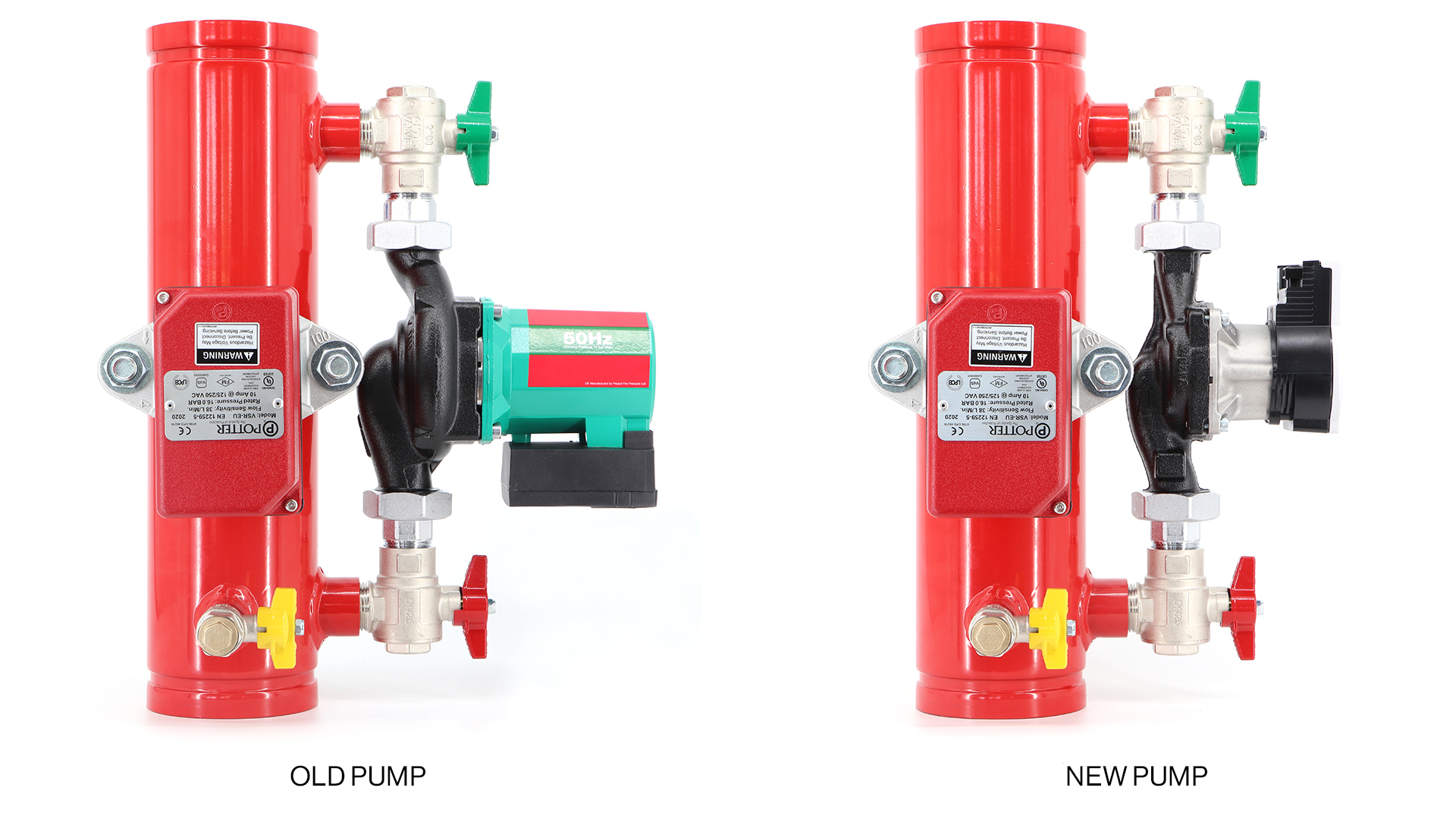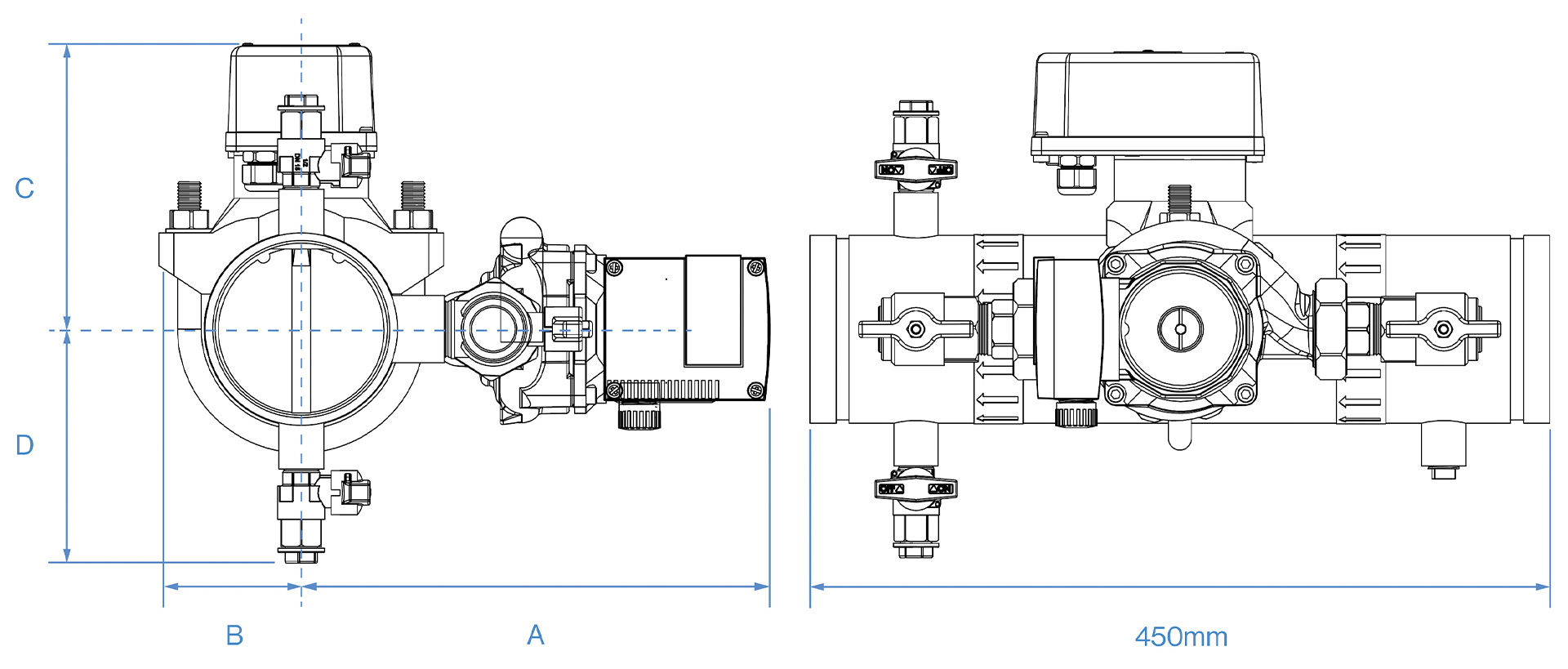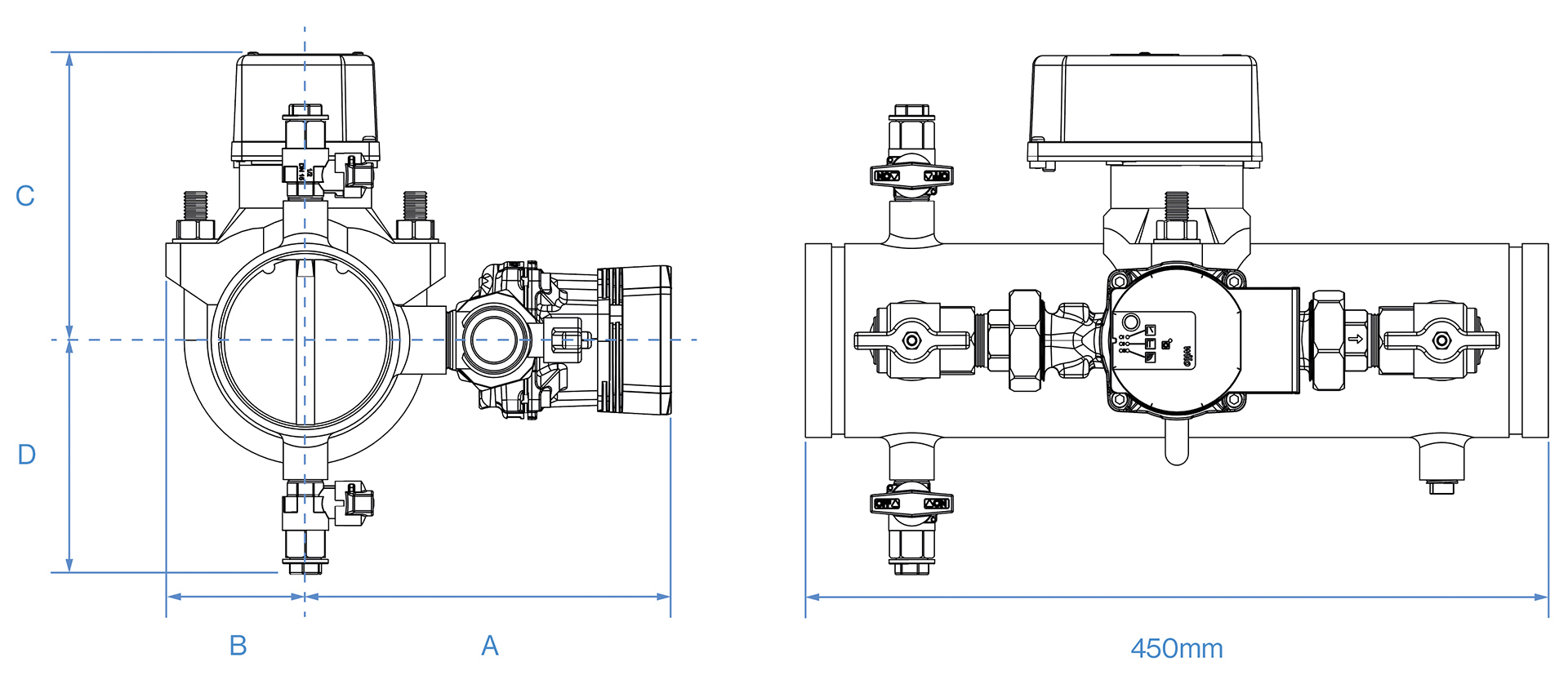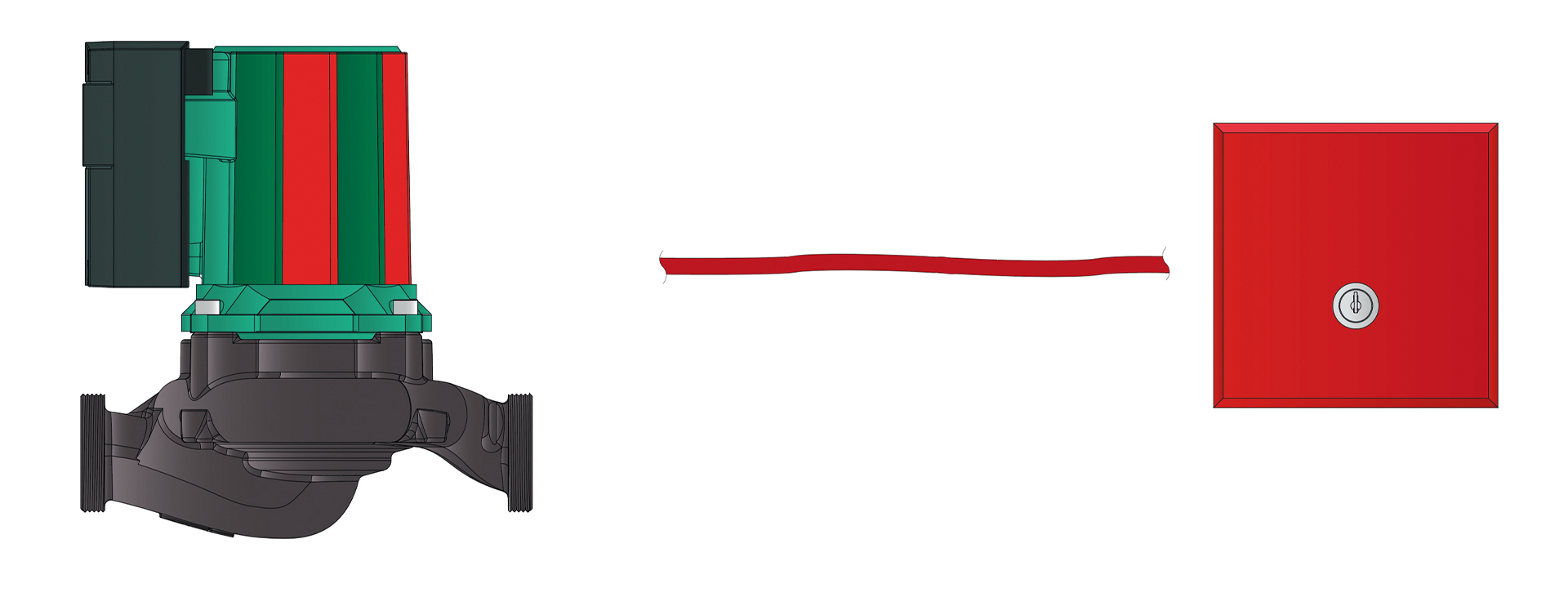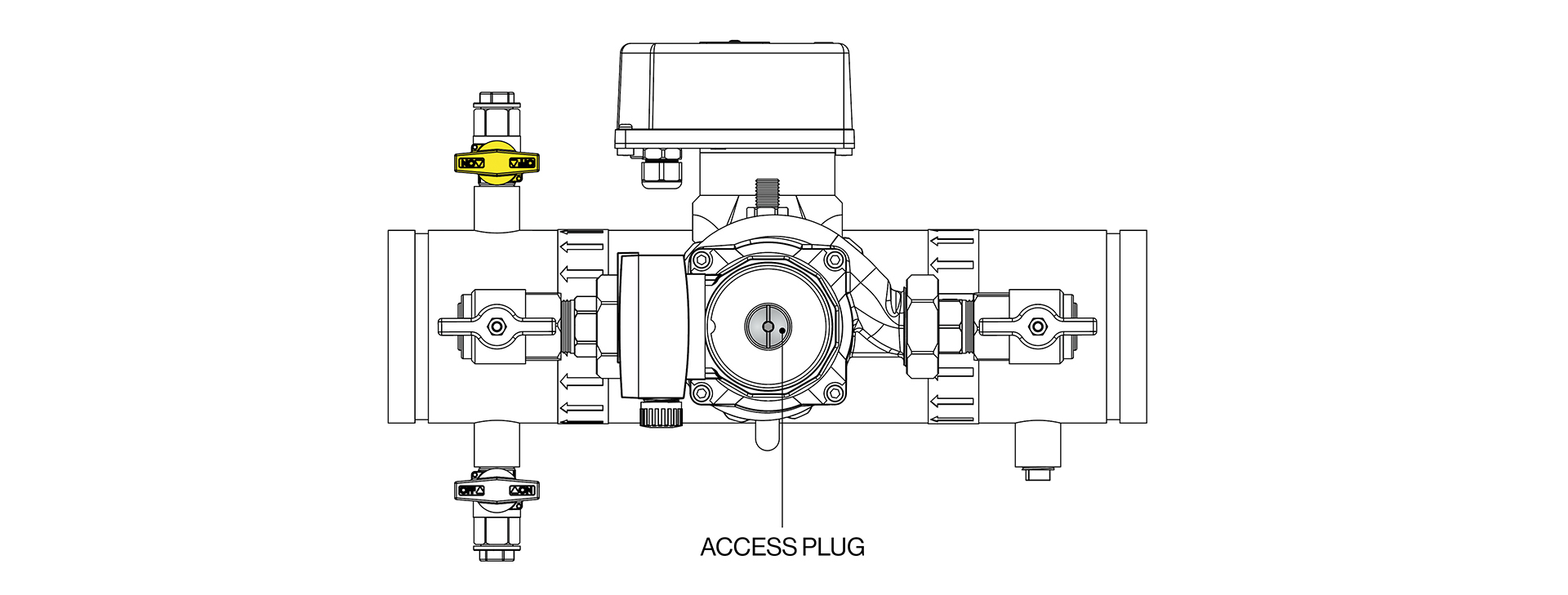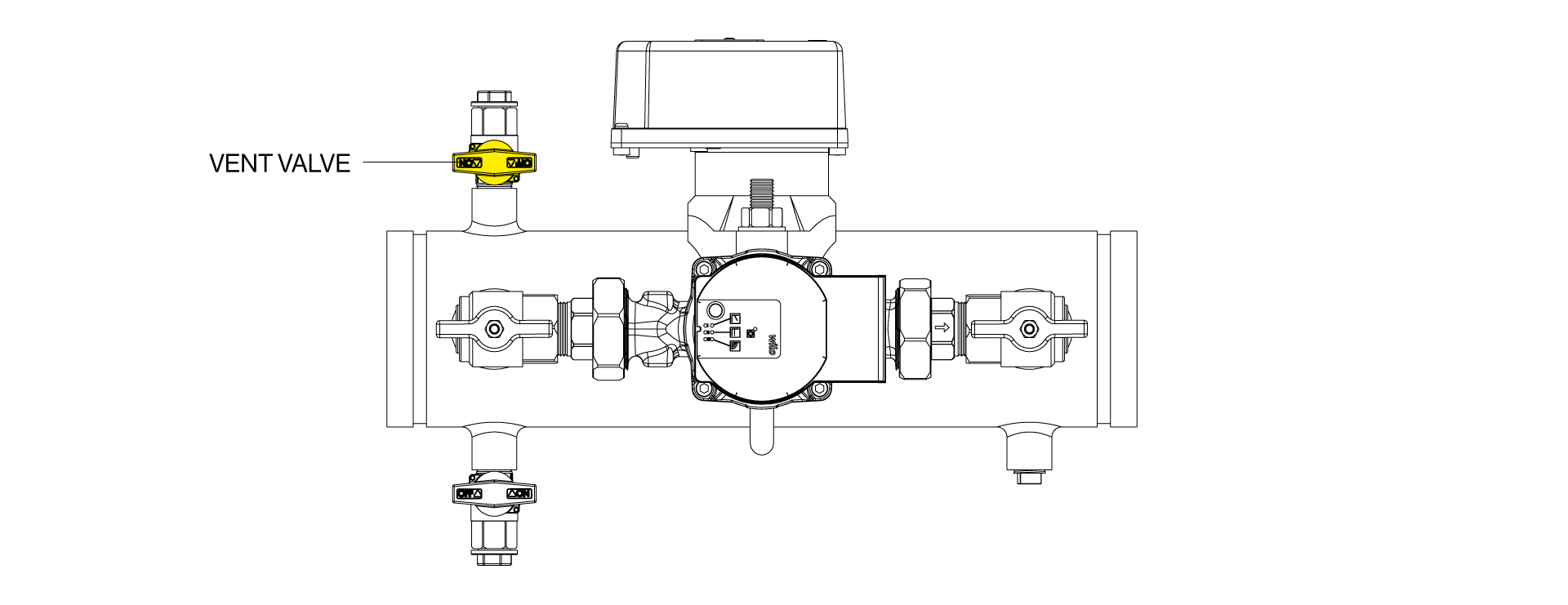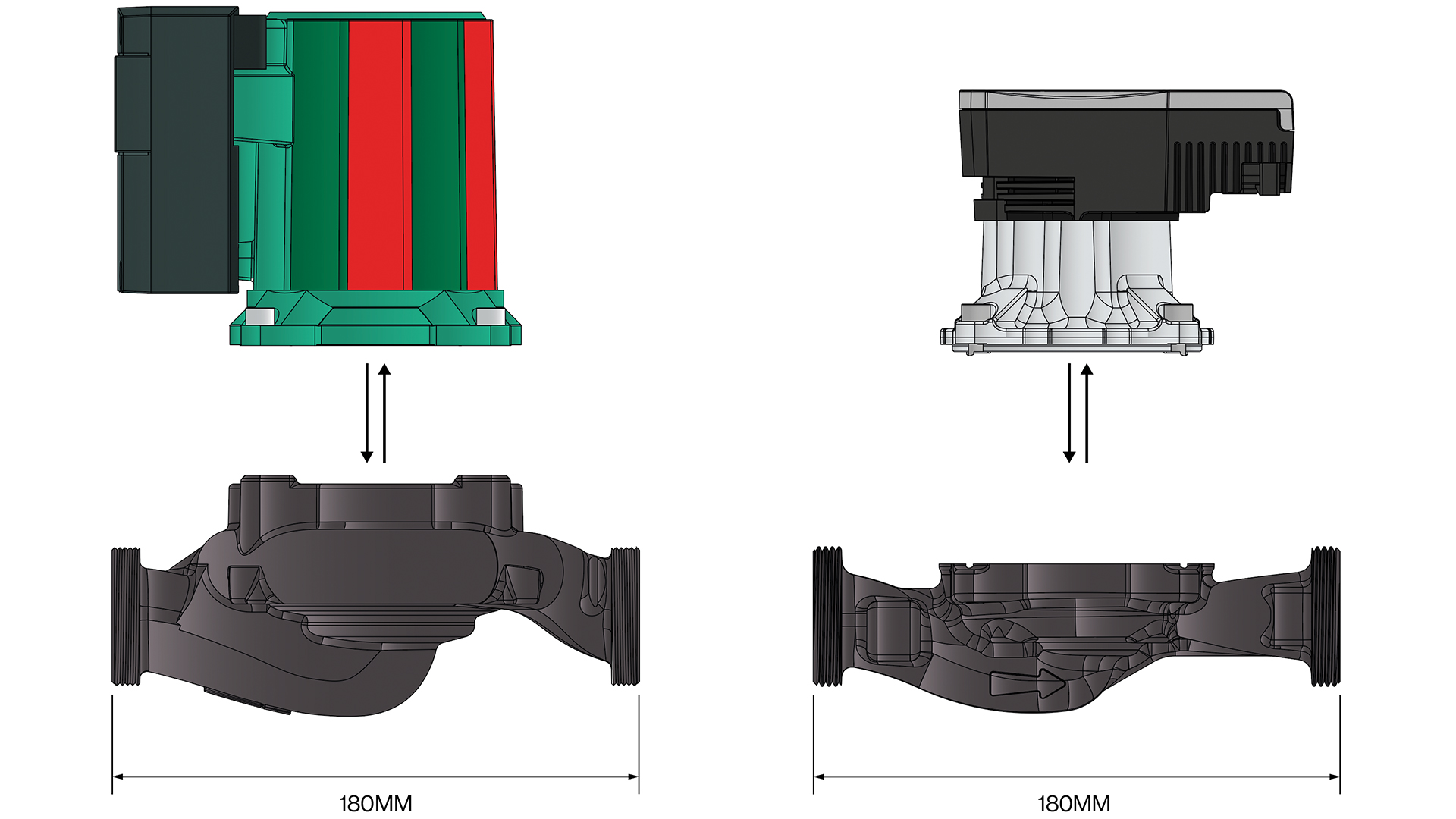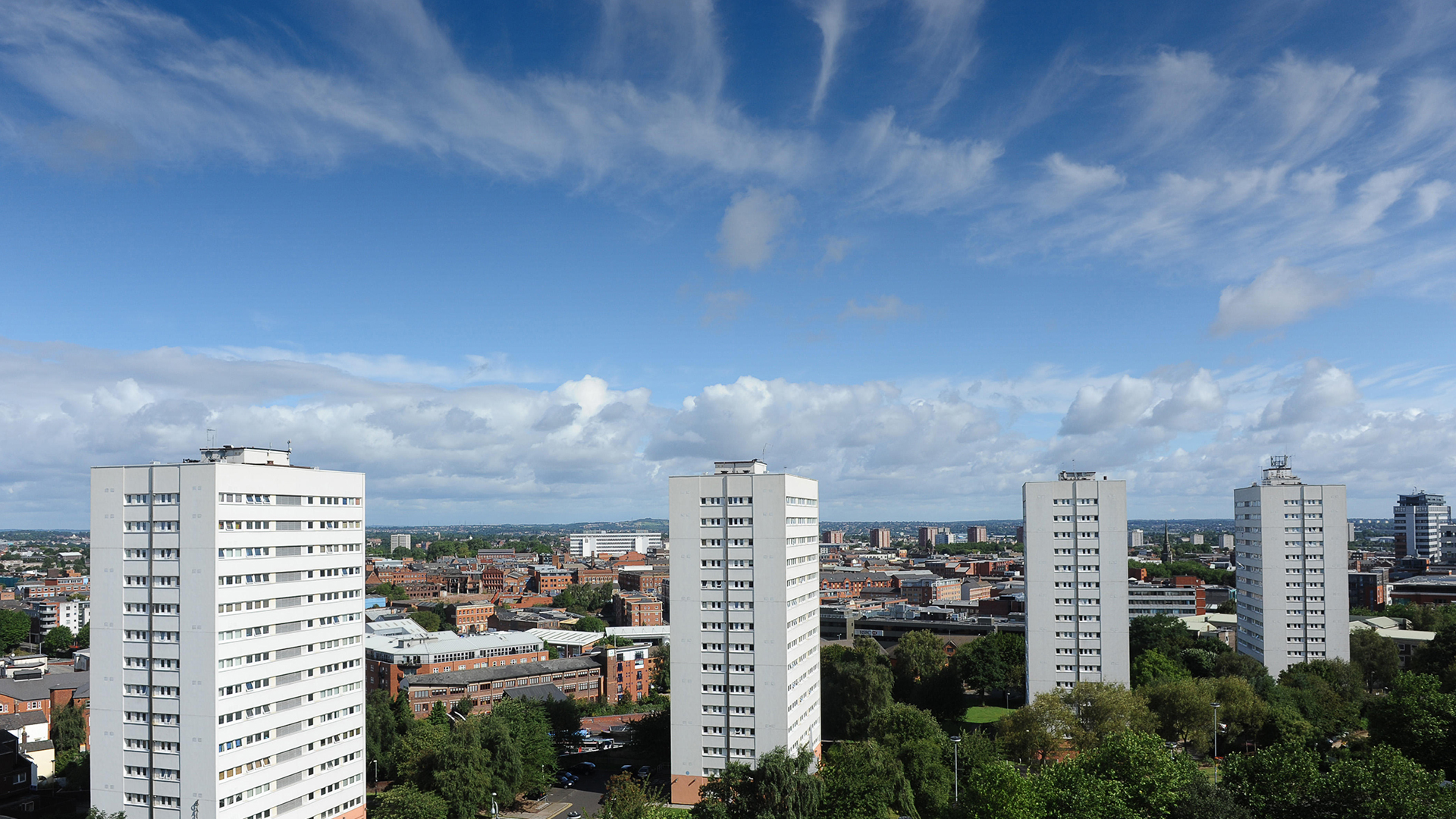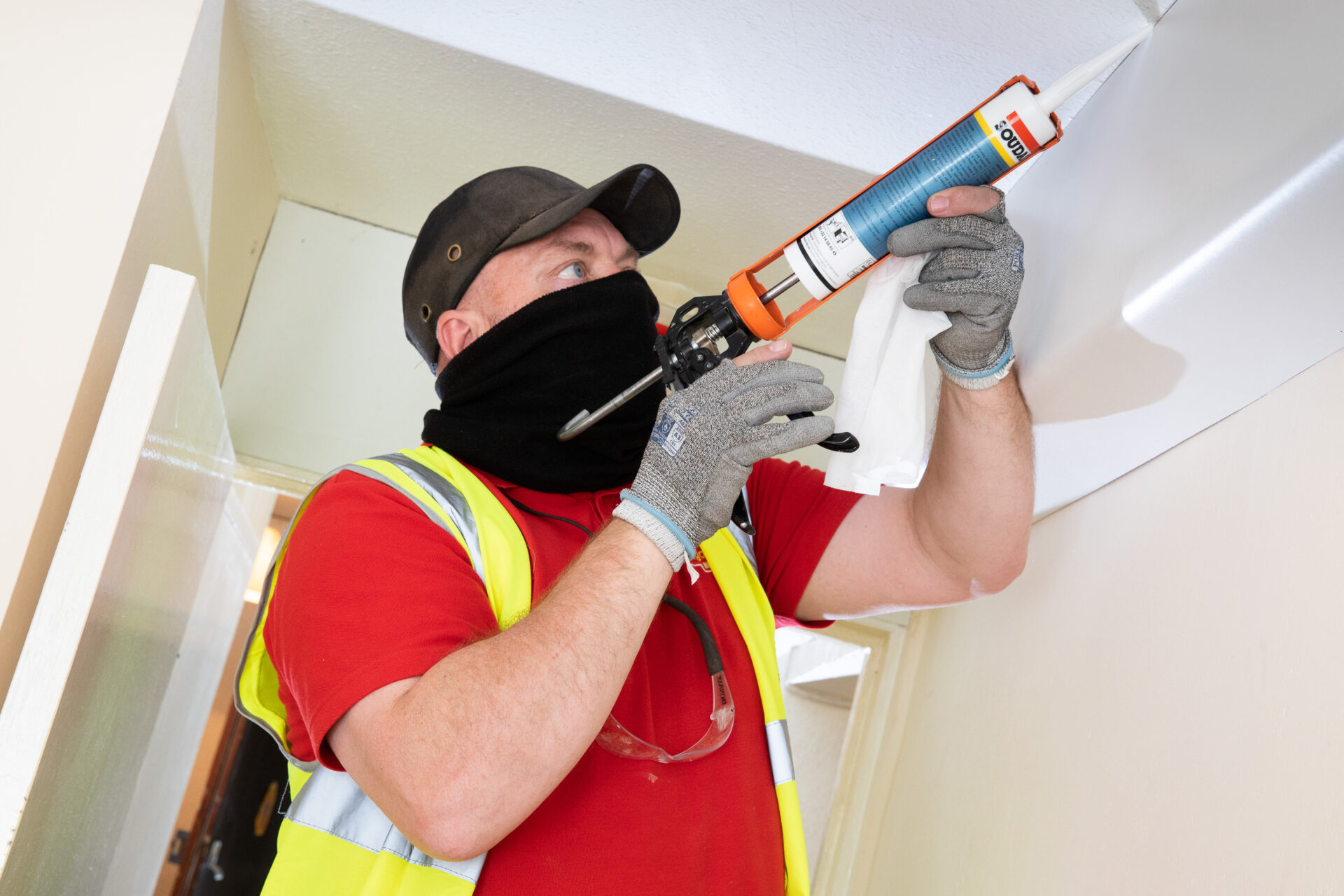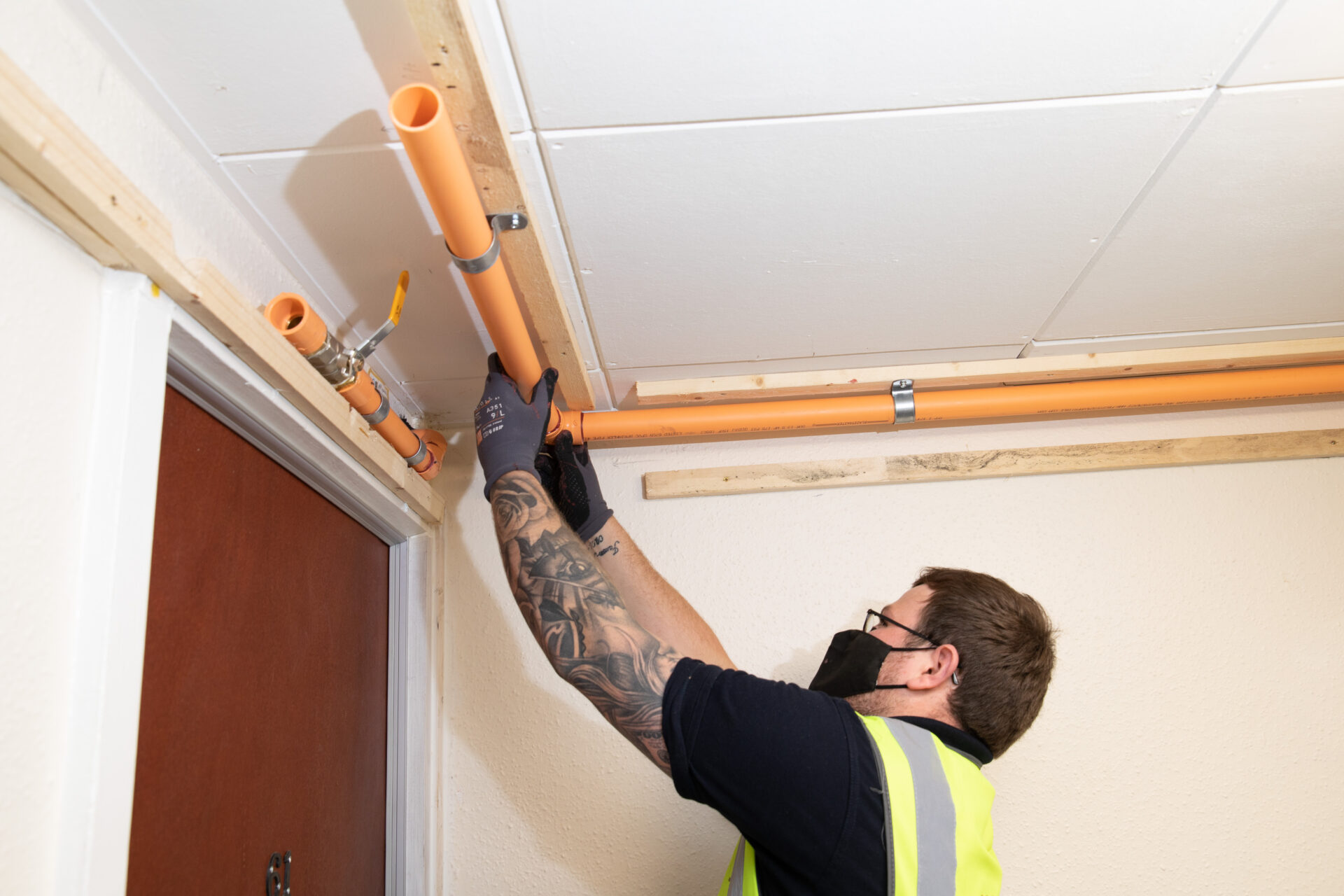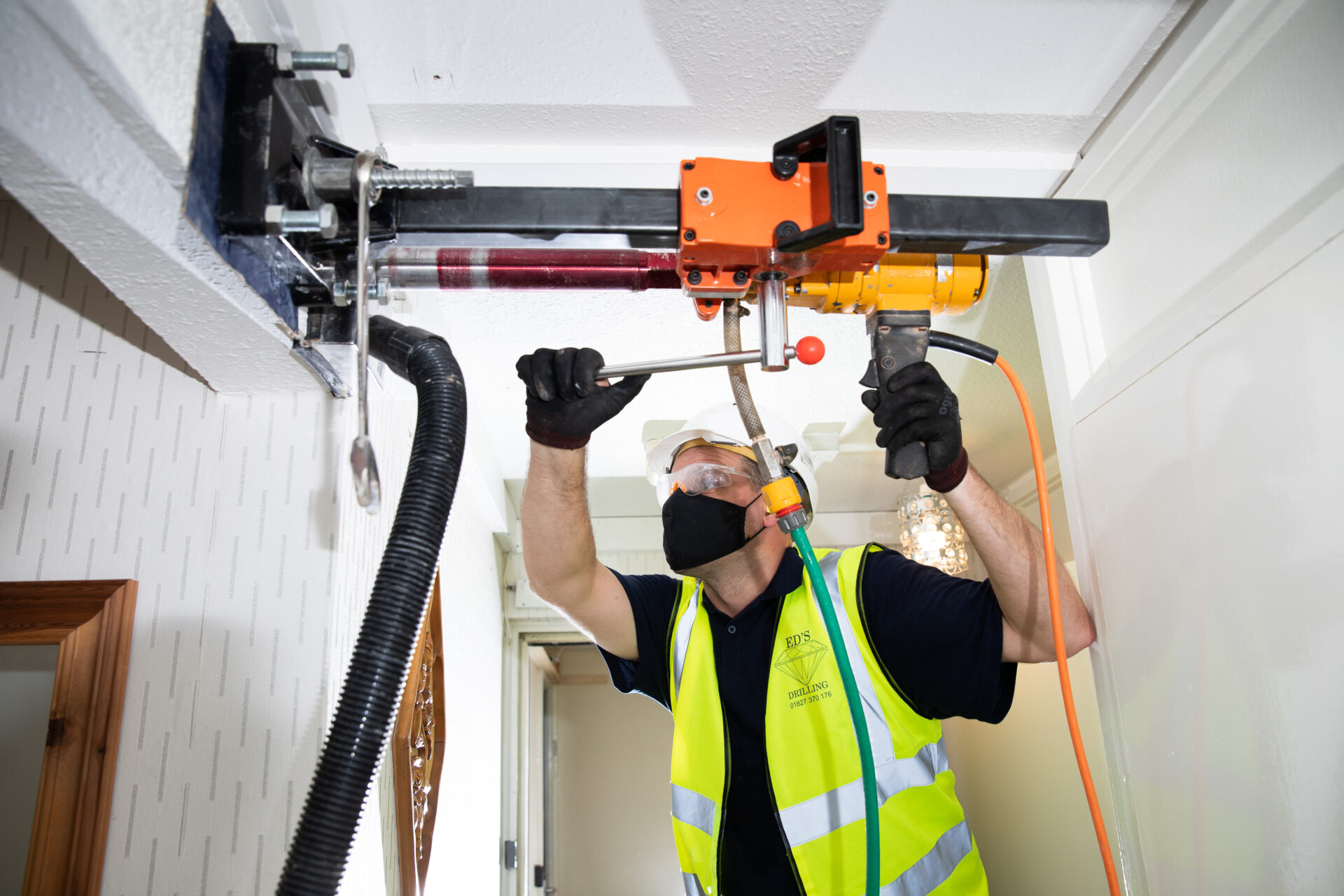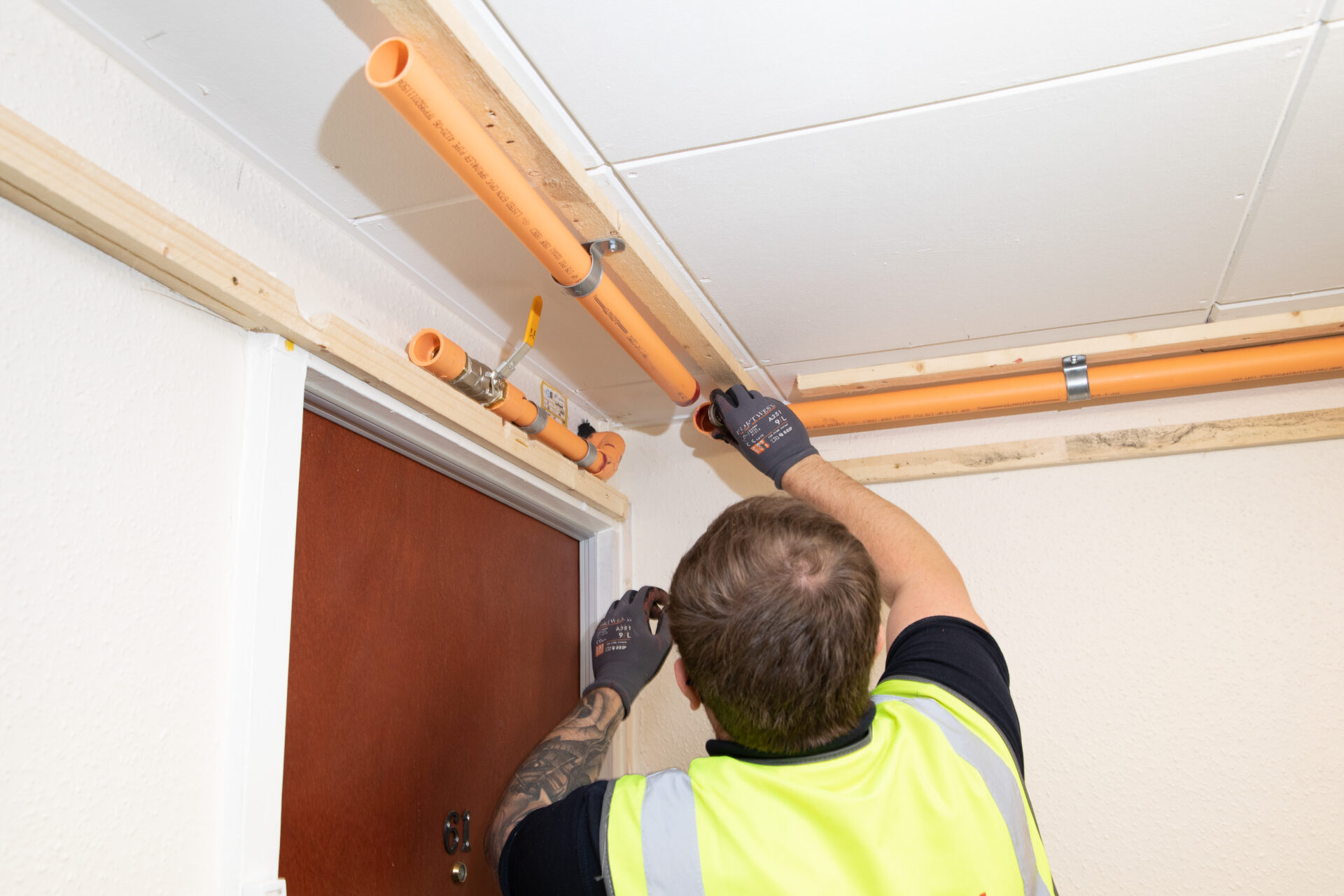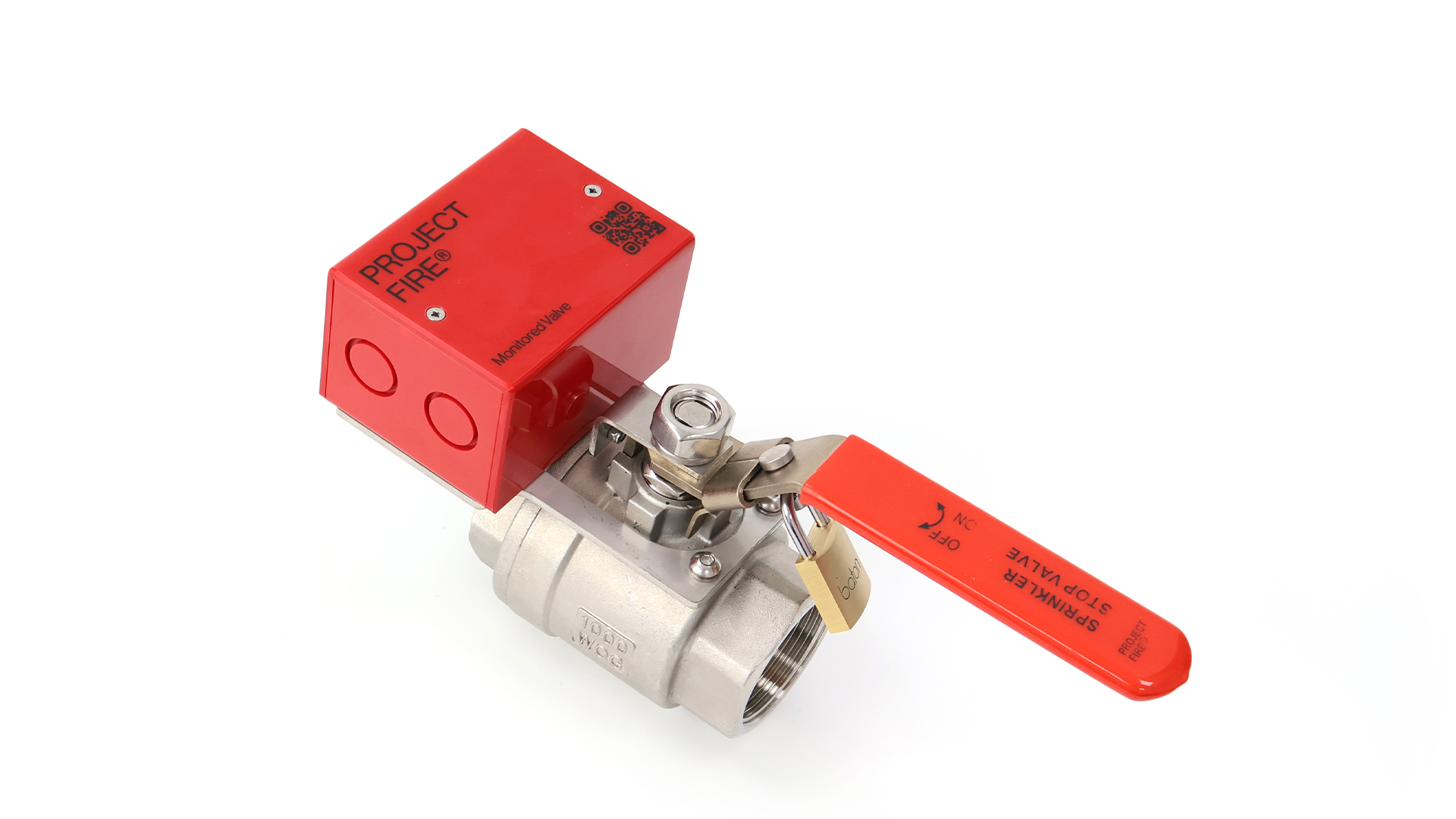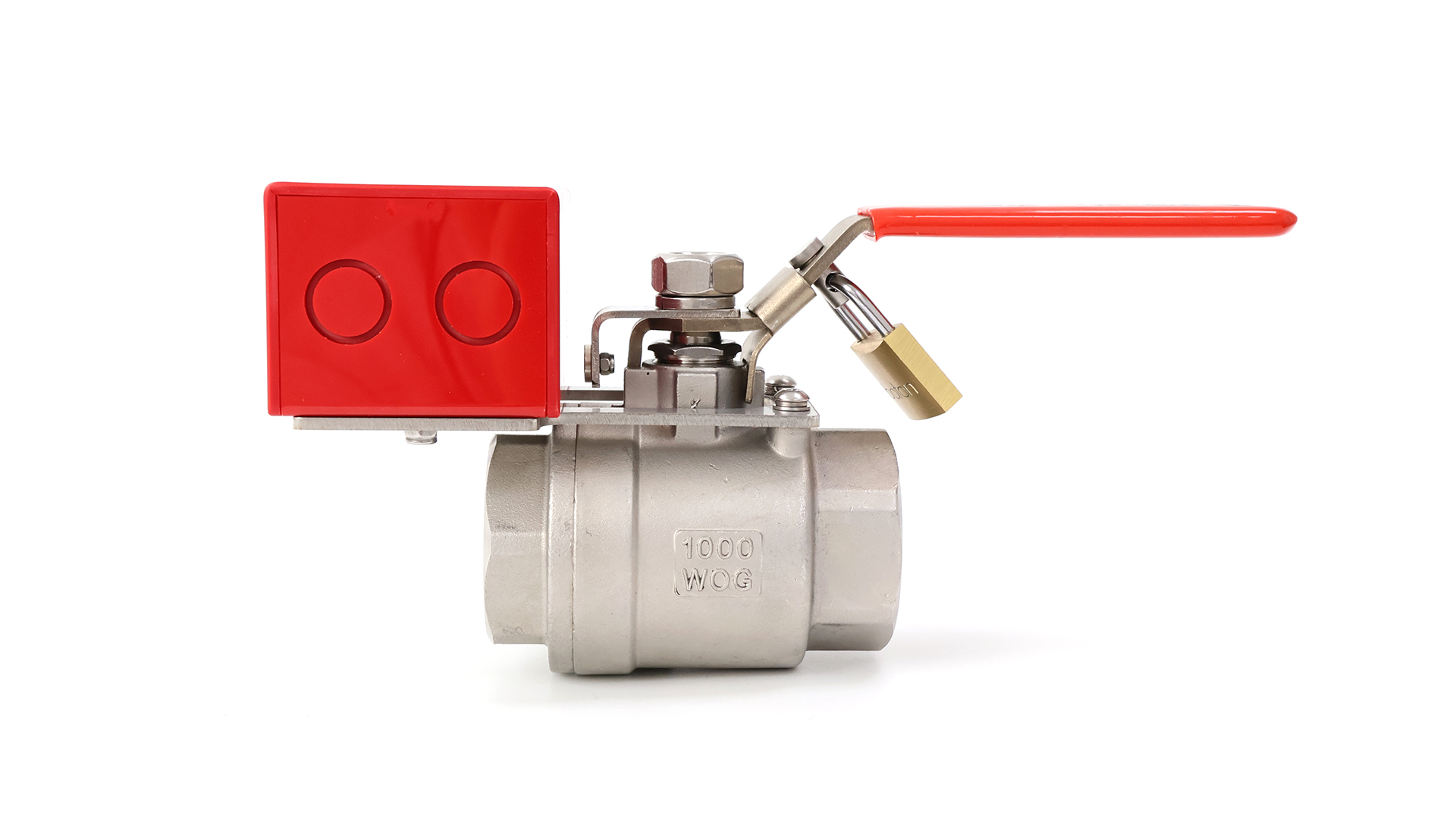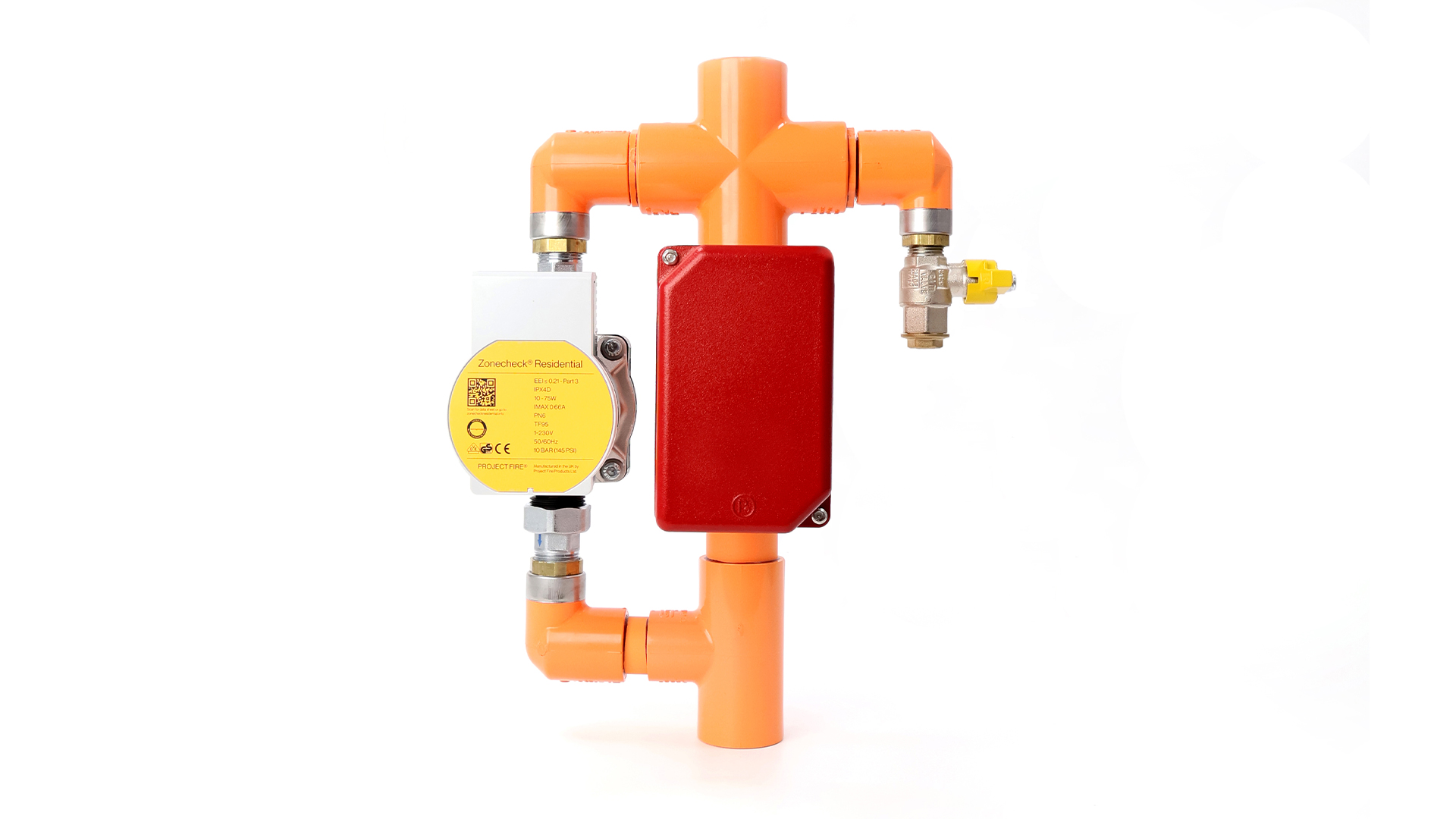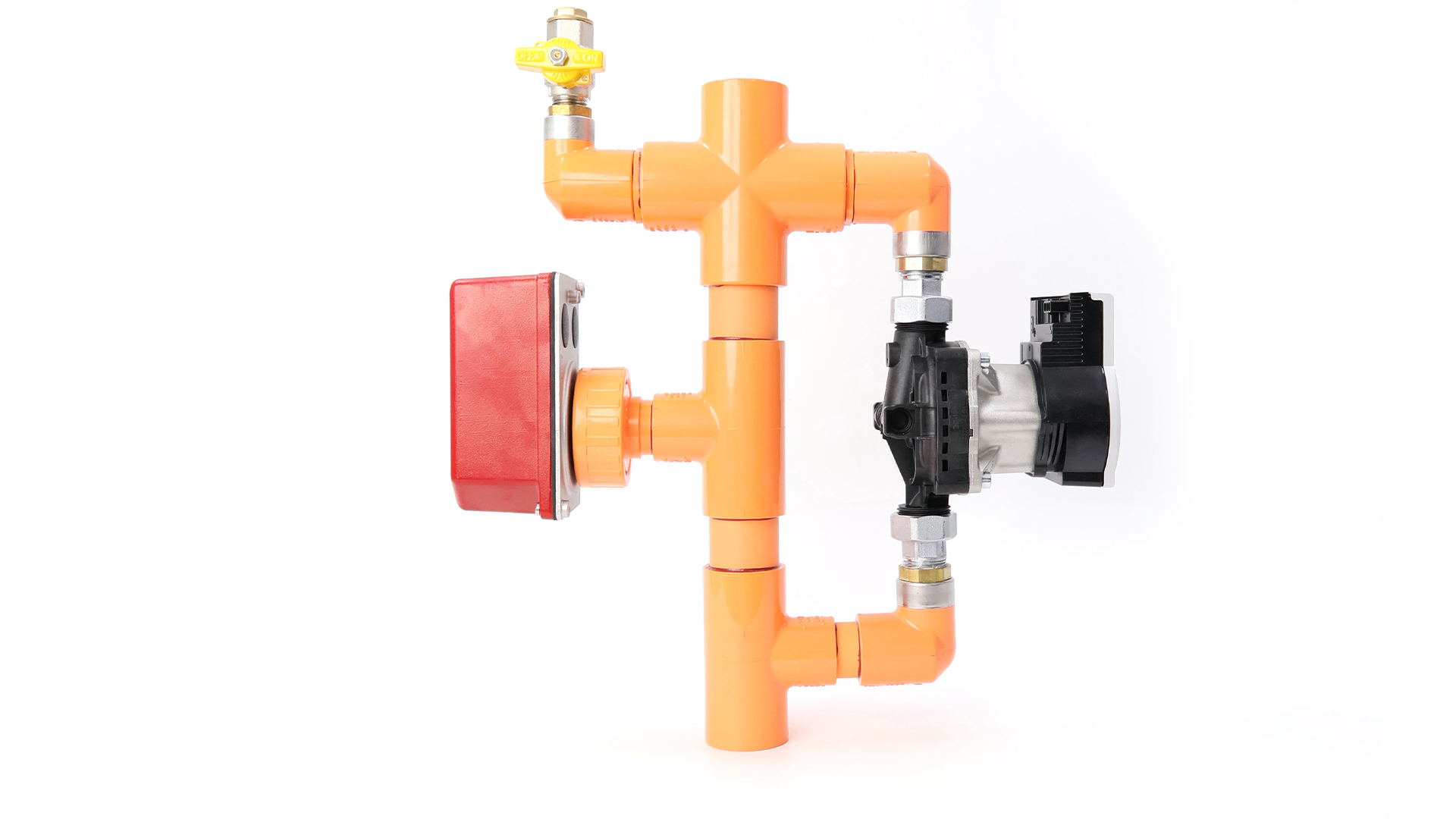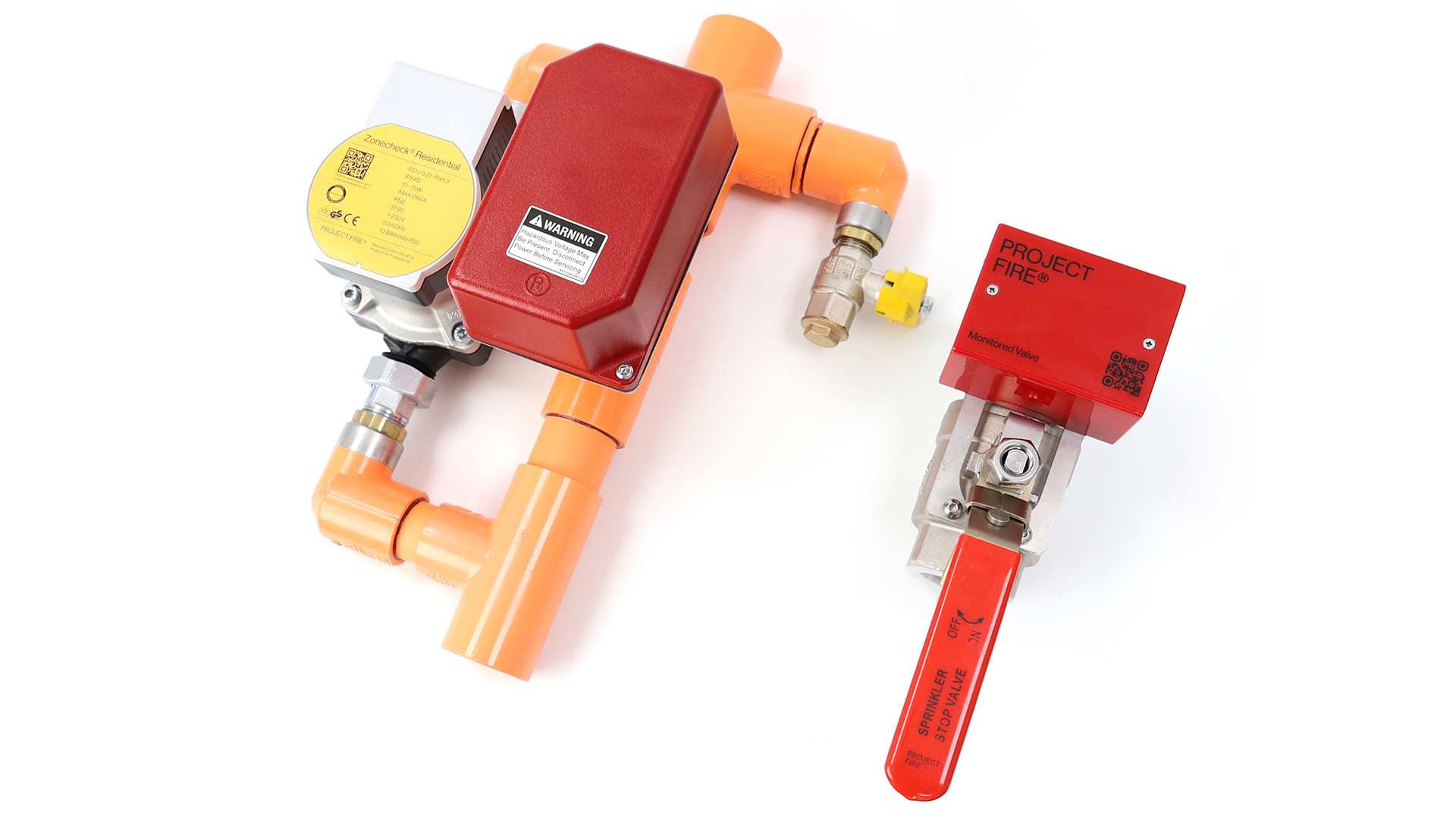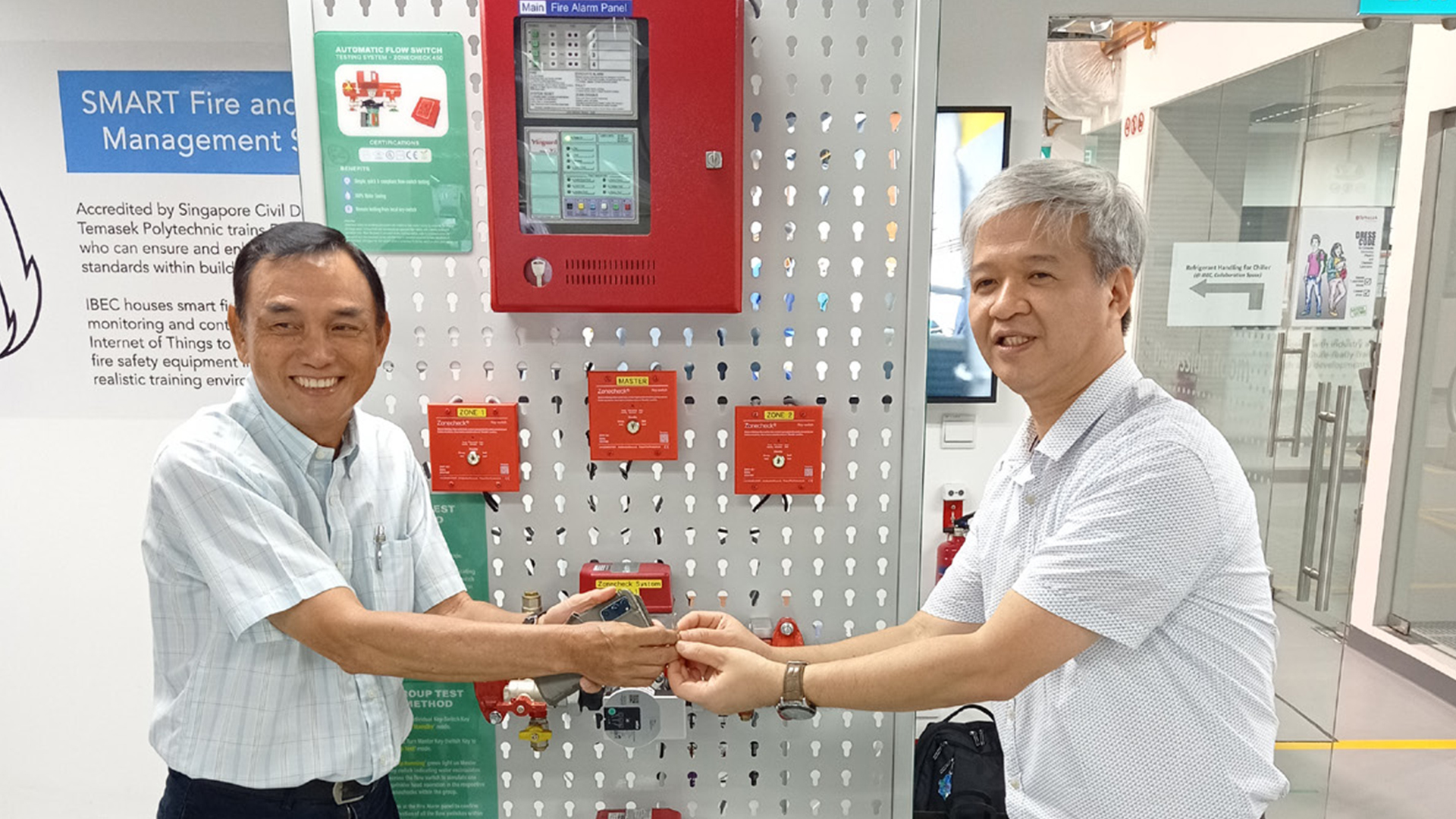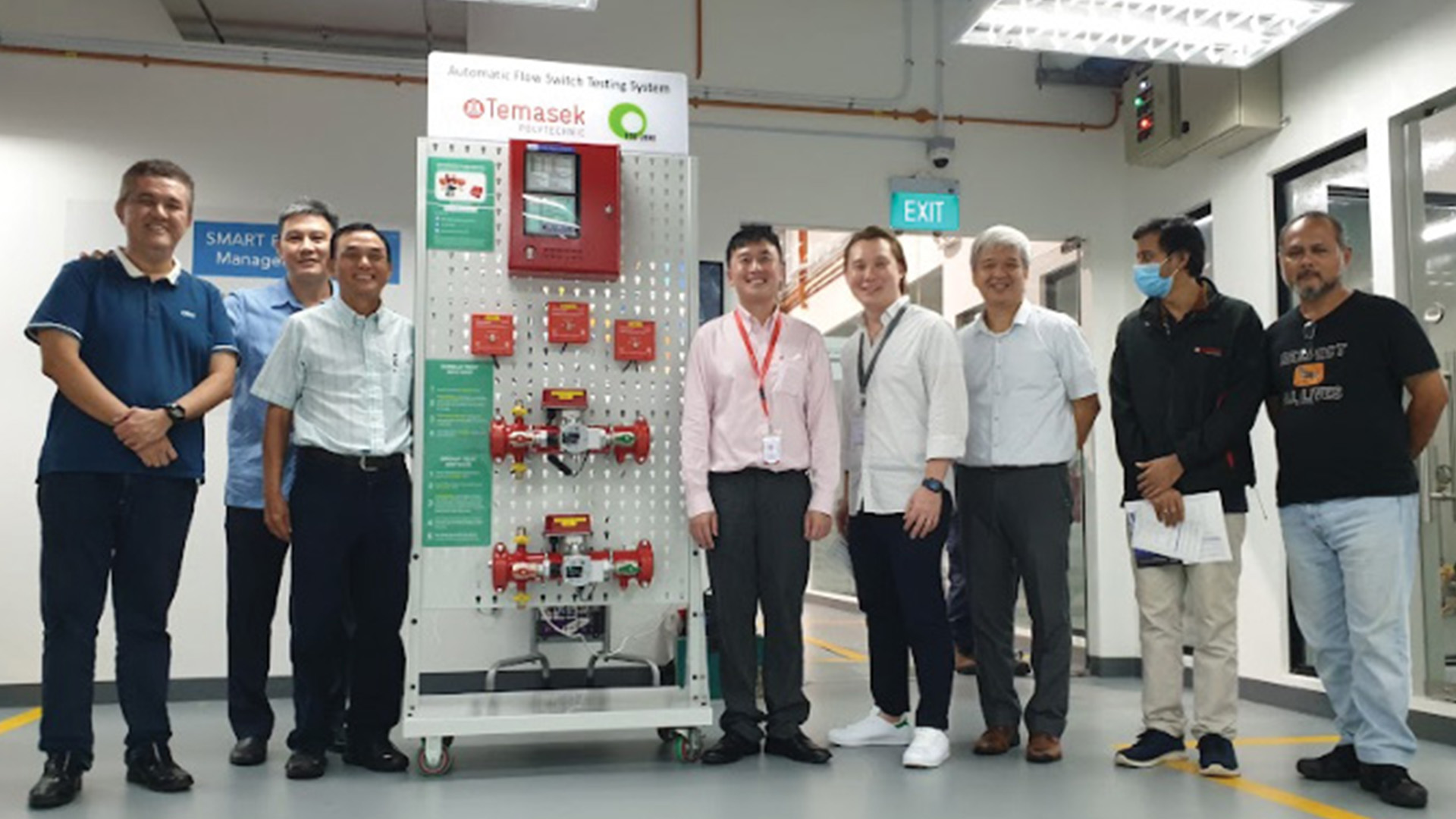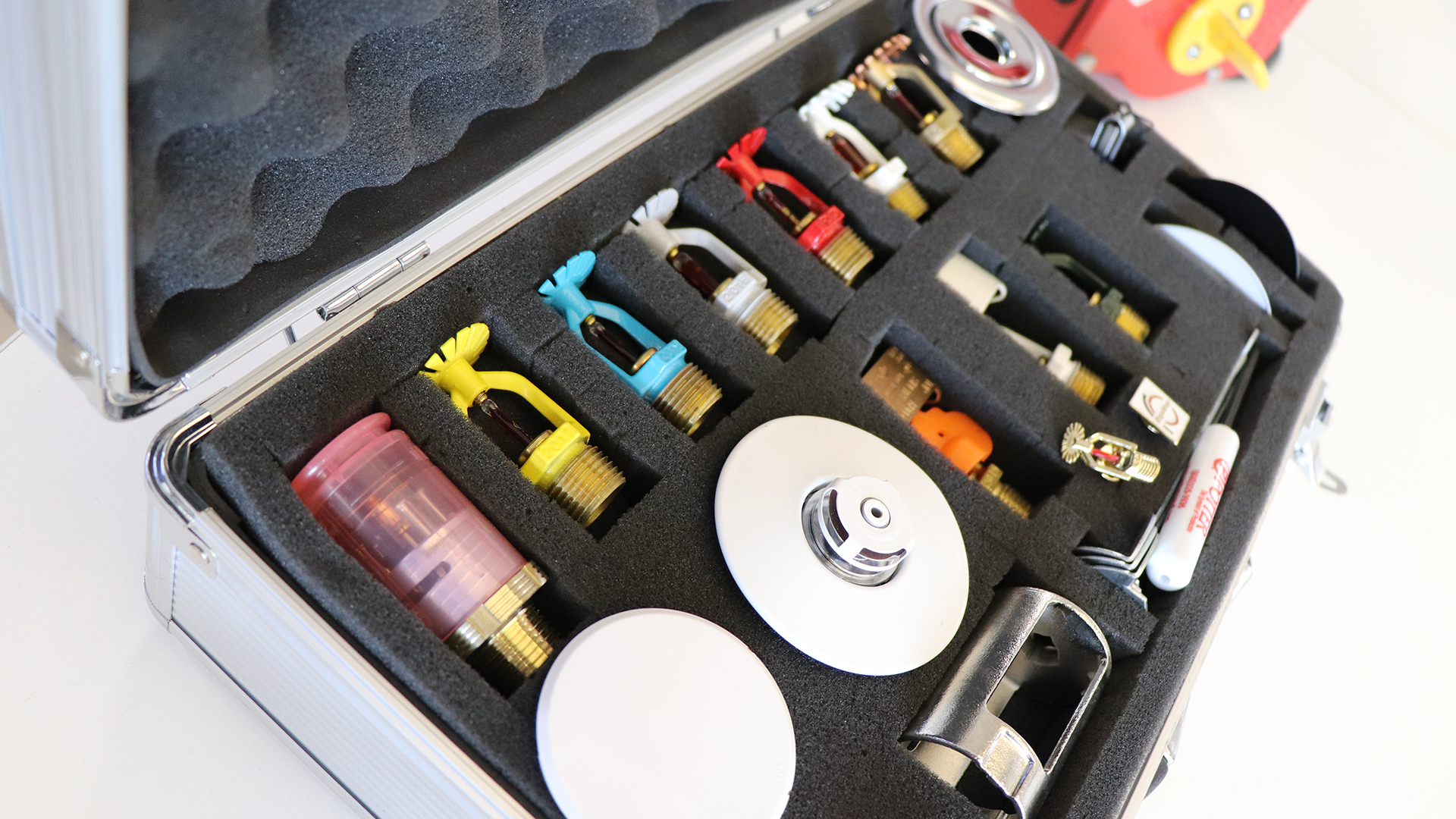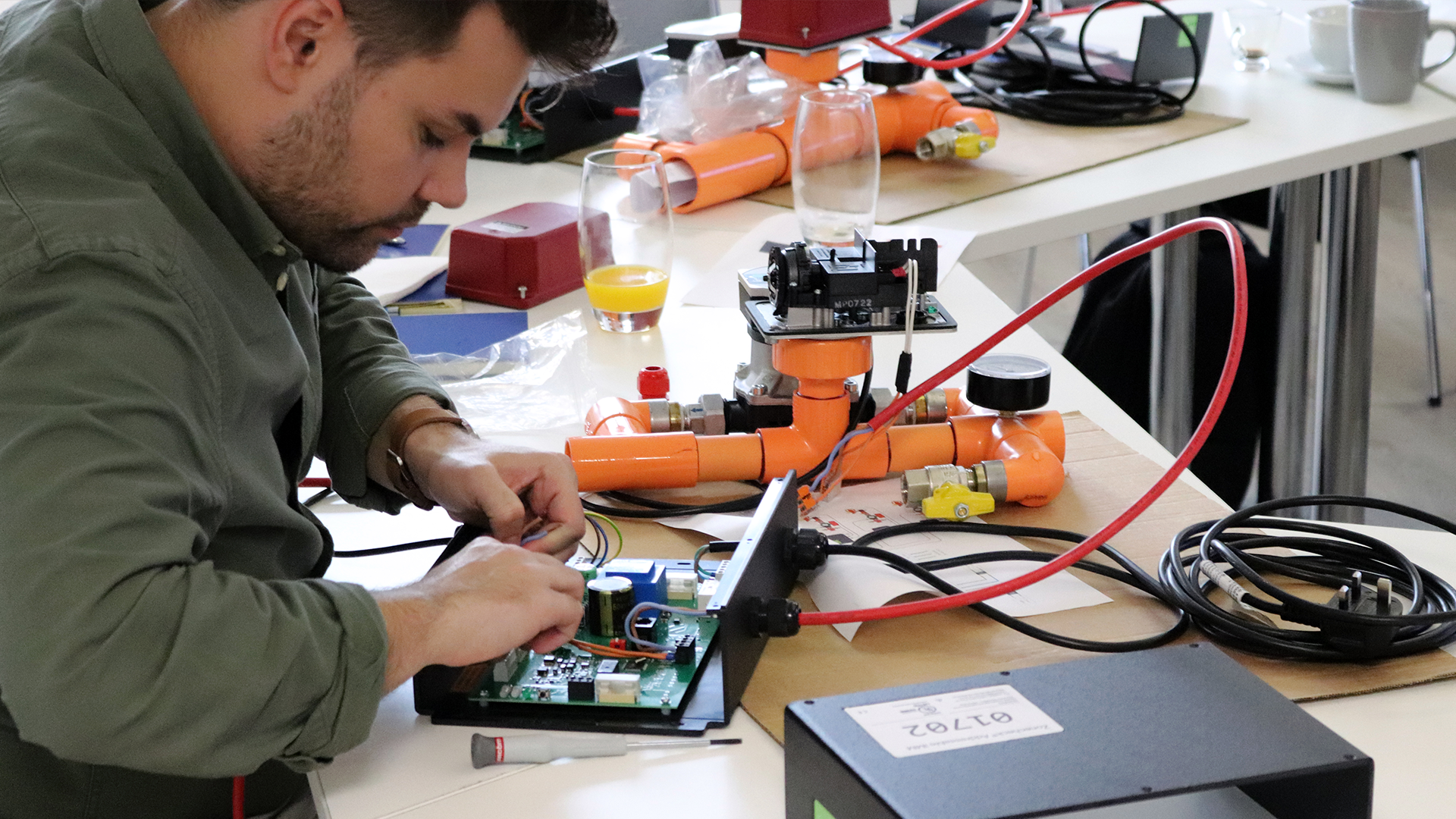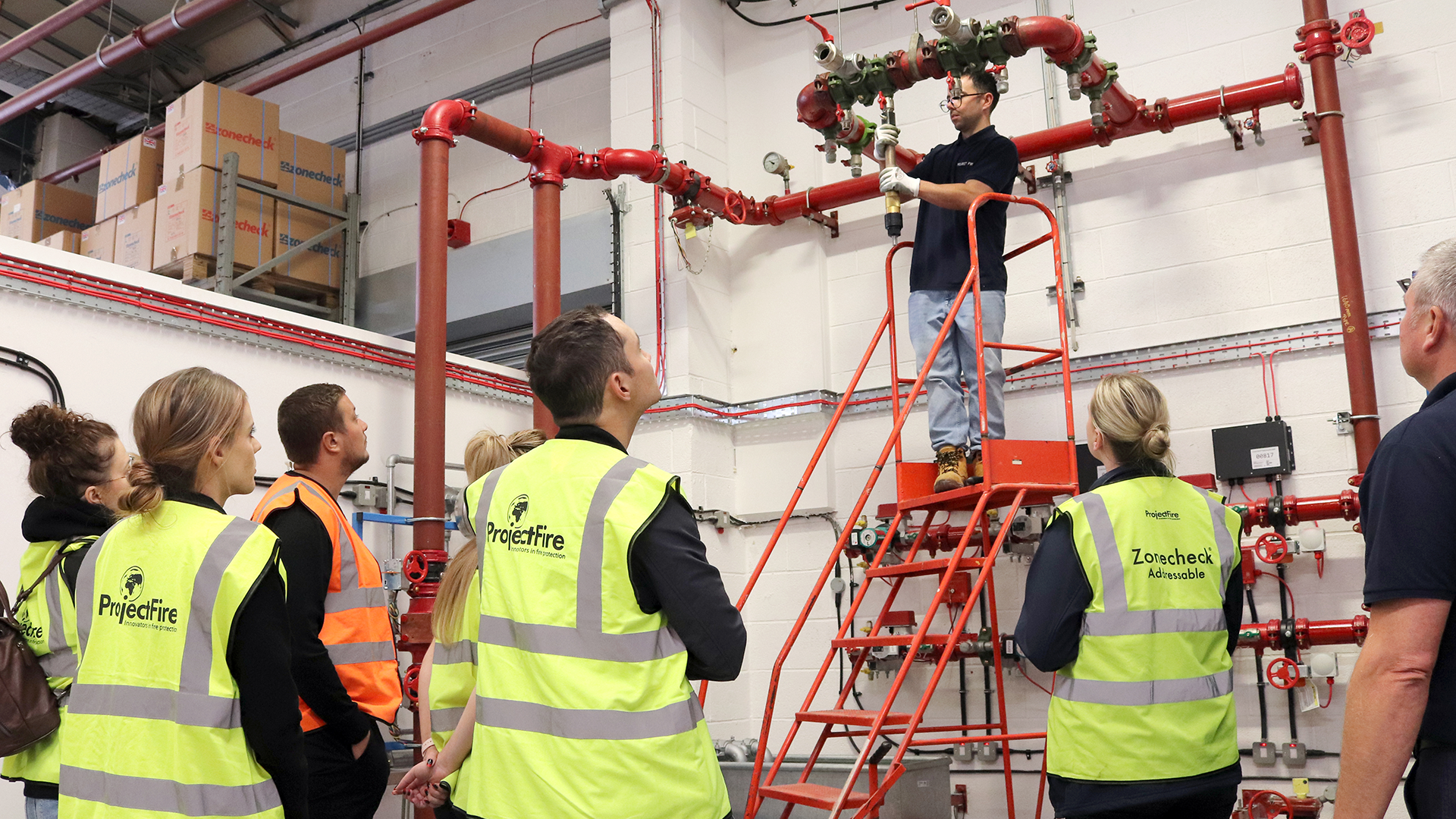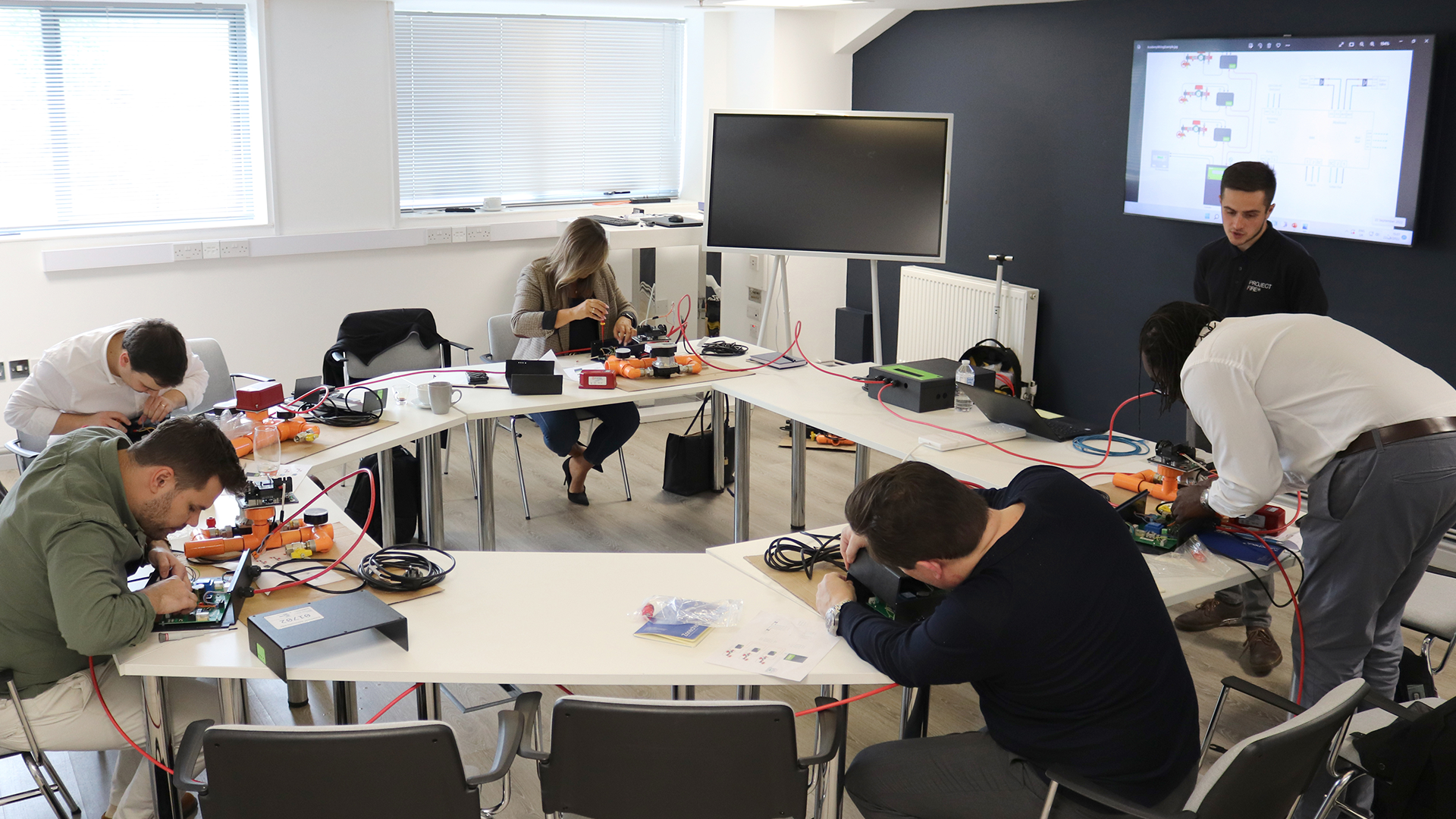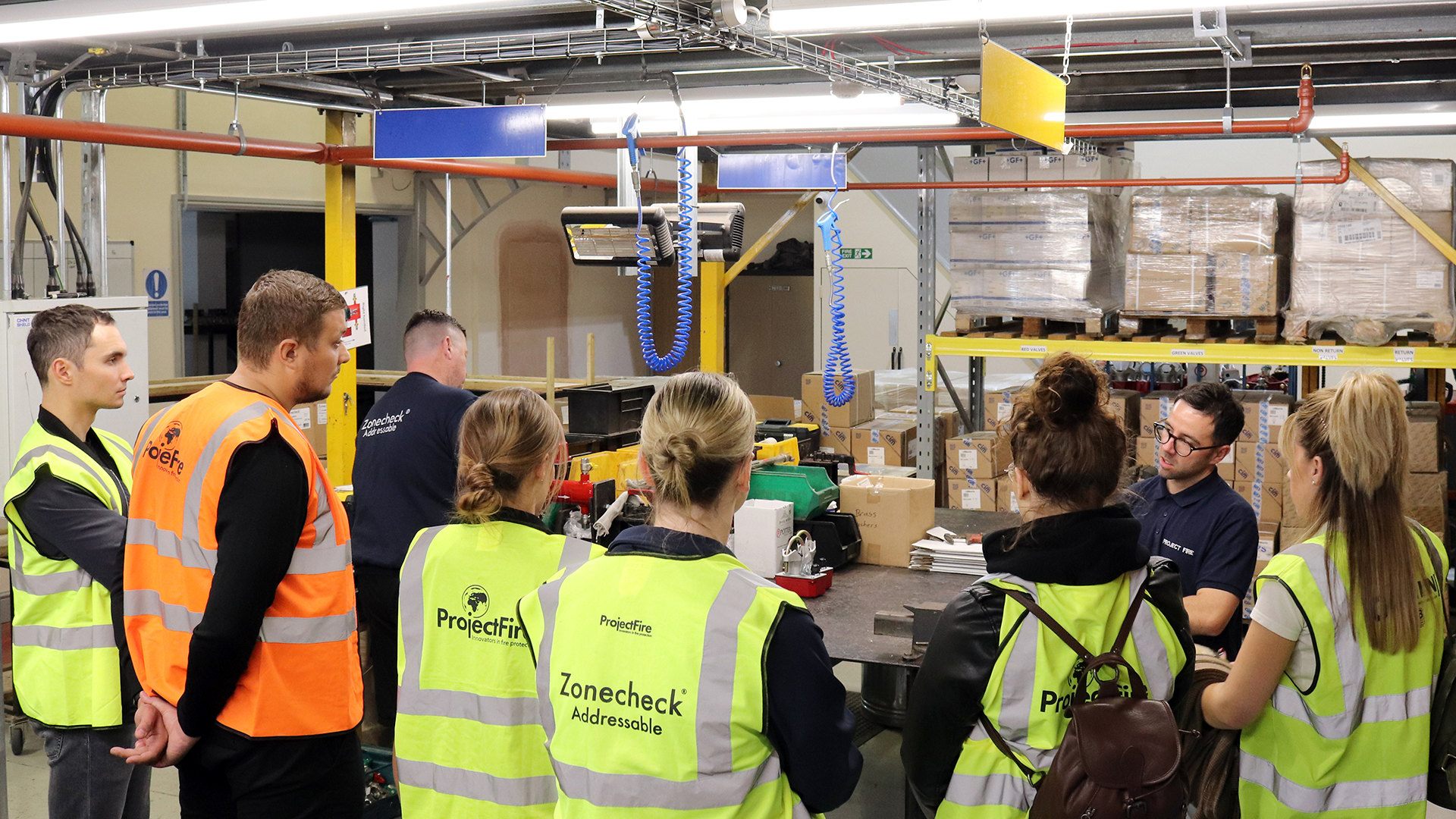Proper maintenance, testing, and compliance are essential aspects of keeping a sprinkler system reliable and effective.
Ensuring the proper maintenance, testing, and compliance with codes and regulations are essential aspects of keeping a sprinkler system reliable and effective in the event of a fire. Here are some key points to consider:
REGULAR INSPECTIONS
Regular inspections should be conducted by qualified professionals to ensure that all components of the sprinkler system are in good working condition. This includes checking pipes, valves, sprinkler heads, and any control systems.
TESTING
Regular testing of the sprinkler system is crucial to verify that it will function as intended in the event of a fire. This may involve flow tests, alarm tests, and full-scale system tests to ensure proper operation.
COMPLIANCE WITH CODES & STANDARDS
Building codes and fire safety standards outline specific requirements for the design, installation, and maintenance of sprinkler systems. It’s essential to stay up-to-date with these codes and ensure that the sprinkler system meets all relevant requirements.
Project Fire Commissioned a white paper gathering data on the most common failures when it comes to sprinkler system operation. The study found that the top three causes when a sprinkler system is ineffective are closed valves, poor maintenance and systems not being designed correctly.
Prioritizing these aspects of maintenance, testing, and compliance, building owners can ensure that their sprinkler systems are ready to effectively respond to any fire emergency.
DOCUMENTATION
Proper documentation of inspections, testing, and maintenance activities is essential for demonstrating compliance with codes and standards. This documentation can also be valuable in the event of an insurance claim or legal dispute.
REMEDIAL WORKS
Any issues identified during inspections or testing should be promptly addressed through repairs or upgrades to ensure the continued reliability of the sprinkler system.
TRAINING & EDUCATION
Building owners and occupants should be educated about the proper use and maintenance of the sprinkler system. This includes knowing how to operate any control panels or valves and understanding the importance of not obstructing sprinkler heads.
Project Fire provide several industry training courses as part of the Project Fire Academy.
EMERGENCY PLANNING
While the sprinkler system is a critical component of fire protection, it’s also essential to have comprehensive emergency plans in place, including evacuation procedures and coordination with local fire departments.
Proper maintenance, testing, and compliance are essential aspects of keeping a sprinkler system reliable and effective.
Ensuring the proper maintenance, testing, and compliance with codes and regulations are essential aspects of keeping a sprinkler system reliable and effective in the event of a fire. Here are some key points to consider:
REGULAR INSPECTIONS
Regular inspections should be conducted by qualified professionals to ensure that all components of the sprinkler system are in good working condition. This includes checking pipes, valves, sprinkler heads, and any control systems.
TESTING
Regular testing of the sprinkler system is crucial to verify that it will function as intended in the event of a fire. This may involve flow tests, alarm tests, and full-scale system tests to ensure proper operation.
COMPLIANCE WITH CODES & STANDARDS
Building codes and fire safety standards outline specific requirements for the design, installation, and maintenance of sprinkler systems. It’s essential to stay up-to-date with these codes and ensure that the sprinkler system meets all relevant requirements.
Technical Specifications
The new Zonecheck is a more efficient design and so has a lower power rating than the previous model. The performance of the two pumps is similar and flow rates are controlled via the use orifice plates built into the Zonecheck assembly so functionality remains the same. Below is a side by side comparison of the technical specifications. The max working pressure of Zonecheck remains the same, 12bar (with testing pressure of 18bar). This will be clearly labelled on the Zonecheck unit in a similar way to before. The pump itself is labelled as PN10 by the manufacturer but this pump (within the overall Zonecheck assembly) has gone through all of the rigorous tests from third party approval bodies as the previous model including static pressure testing to over 40bar.
| OLD PUMP | NEW PUMP | ||
|---|---|---|---|
| Type | Wilo | Type | Wilo |
| Operating voltage | 230V 50Hz | Operating voltage | 230V 50/60Hz |
| IMAX | 0.93A | IMAX | 0.82A |
| Max power rating | 195W | Max power rating | 75W |
| IP rating | IP43 | IP rating | IPX4D |
Dimensions
| OLD ZONECHECK | ||||
|---|---|---|---|---|
| ØMM | A | B | C | D |
| 50 (2″) | 256 | 66 | 145 | 116 |
| 65 (2 1/2″) | 264 | 66 | 155 | 124 |
| 80 (3″) | 271 | 85 | 165 | 130 |
| 100 (4″) | 283 | 85 | 170 | 140 |
| 150 (6″) | 309 | 115 | 195 | 170 |
| 200 (8″) | 336 | 150 | 225 | 195 |
| NEW ZONECHECK | ||||
|---|---|---|---|---|
| ØMM | A | B | C | D |
| 50 (2″) | 210 | 66 | 145 | 116 |
| 65 (2 1/2″) | 215 | 66 | 155 | 124 |
| 80 (3″) | 220 | 85 | 165 | 130 |
| 100 (4″) | 225 | 85 | 170 | 140 |
| 150 (6″) | 150 | 115 | 195 | 170 |
| 200 (8″) | 275 | 150 | 225 | 195 |
Wiring
The old pump was wired directly into a plastic housing on the side of the pump. The new pump will be supplied with a short fly lead and a male/female connector (see below). The installer will firstly site the key-switch at an appropriate location and then wire from the key-switch to the female side of the connector assembly. This can then be plugged into the connector on the pump fly lead simplifying on-site installation.
Venting
The new pump is designed to be less sensitive to pockets of air within the water. Zonecheck has always included a vent valve as part of the assembly so the Zonecheck can easily be vented via this means, although the old pump could be vented through a seal at the end of the pump motor assembly.
Venting is an important process to ensure that the pump works efficiently and trips the flow-switch. Venting is only required when the Zonecheck is installed horizontally and once the pipework is vented, it is unlikely to require further venting unless the pipework is drained and the water replaced.
The new pump is self venting and has the ability to push air out of the pump, although if you still continue to experience trapped air causing failed tests you can open the yellow vent value to discharge water to remove any further trapped air. You can view the new venting procedure for the new pump here.
Pump Replacement
The old pump has proven itself to be an extremely reliable pump and has been in service for over 20 years. In rare cases the pump can can cease if manufacturers guidelines aren’t followed, for instance when a Zonecheck is installed and no flow-switch testing has been carried out for a prolonged period of time.
The new pump model should provide a longer life span than the previous pump model (as long as manufacturers guidelines are followed) based on the life-cycle testing performed in-house at Project Fire.
PUMP REPLACEMENT PROCEDURE
For both the old and new pump the replacement procedure is the same. If either of the pumps need to be replaced then there are two main ways to do this:
- Replace the pump motor only (easiest method)
- Replace both the pump motor and casting as an entire pump replacement.
It is important to note that the old and new pump heads are not interchangeable. However, an entire pump (motor and casting) are interchangeable (as the distance between the red and green valves remain the same). Project Fire will hold a stock of the old pumps for maintenance purposes but once these have gone, older Zonechecks that require a replacement pump will have to replace both the motor and casting.
Products Affected
- Zonecheck
- Zonecheck Retro-fit
- Zonecheck Pre-wired
- Zonecheck Addressable
- Zonecheck Econ Aqua (mist)
- Zonecheck Live
- Zonecheck Residential (galvanised)
- Firepod
Proper maintenance, testing, and compliance are essential aspects of keeping a sprinkler system reliable and effective.
Ensuring the proper maintenance, testing, and compliance with codes and regulations are essential aspects of keeping a sprinkler system reliable and effective in the event of a fire. Here are some key points to consider:
REGULAR INSPECTIONS
Regular inspections should be conducted by qualified professionals to ensure that all components of the sprinkler system are in good working condition. This includes checking pipes, valves, sprinkler heads, and any control systems.
TESTING
Regular testing of the sprinkler system is crucial to verify that it will function as intended in the event of a fire. This may involve flow tests, alarm tests, and full-scale system tests to ensure proper operation.
COMPLIANCE WITH CODES & STANDARDS
Building codes and fire safety standards outline specific requirements for the design, installation, and maintenance of sprinkler systems. It’s essential to stay up-to-date with these codes and ensure that the sprinkler system meets all relevant requirements.
Wiring
The old pump was wired directly into a plastic housing on the side of the pump. The new pump will be supplied with a short fly lead and a male/female connector (see below). The installer will firstly site the key-switch at an appropriate location and then wire from the key-switch to the female side of the connector assembly. This can then be plugged into the connector on the pump fly lead simplifying on-site installation.
Proper maintenance, testing, and compliance are essential aspects of keeping a sprinkler system reliable and effective.
Ensuring the proper maintenance, testing, and compliance with codes and regulations are essential aspects of keeping a sprinkler system reliable and effective in the event of a fire. Here are some key points to consider:
REGULAR INSPECTIONS
Regular inspections should be conducted by qualified professionals to ensure that all components of the sprinkler system are in good working condition. This includes checking pipes, valves, sprinkler heads, and any control systems.
TESTING
Regular testing of the sprinkler system is crucial to verify that it will function as intended in the event of a fire. This may involve flow tests, alarm tests, and full-scale system tests to ensure proper operation.
COMPLIANCE WITH CODES & STANDARDS
Building codes and fire safety standards outline specific requirements for the design, installation, and maintenance of sprinkler systems. It’s essential to stay up-to-date with these codes and ensure that the sprinkler system meets all relevant requirements.
Project Fire Commissioned a white paper gathering data on the most common failures when it comes to sprinkler system operation. The study found that the top three causes when a sprinkler system is ineffective are closed valves, poor maintenance and systems not being designed correctly.
Prioritizing these aspects of maintenance, testing, and compliance, building owners can ensure that their sprinkler systems are ready to effectively respond to any fire emergency.
DOCUMENTATION
Proper documentation of inspections, testing, and maintenance activities is essential for demonstrating compliance with codes and standards. This documentation can also be valuable in the event of an insurance claim or legal dispute.
REMEDIAL WORKS
Any issues identified during inspections or testing should be promptly addressed through repairs or upgrades to ensure the continued reliability of the sprinkler system.
TRAINING & EDUCATION
Building owners and occupants should be educated about the proper use and maintenance of the sprinkler system. This includes knowing how to operate any control panels or valves and understanding the importance of not obstructing sprinkler heads.
Project Fire provide several industry training courses as part of the Project Fire Academy.
EMERGENCY PLANNING
While the sprinkler system is a critical component of fire protection, it’s also essential to have comprehensive emergency plans in place, including evacuation procedures and coordination with local fire departments.
Proper maintenance, testing, and compliance are essential aspects of keeping a sprinkler system reliable and effective.
Ensuring the proper maintenance, testing, and compliance with codes and regulations are essential aspects of keeping a sprinkler system reliable and effective in the event of a fire. Here are some key points to consider:
REGULAR INSPECTIONS
Regular inspections should be conducted by qualified professionals to ensure that all components of the sprinkler system are in good working condition. This includes checking pipes, valves, sprinkler heads, and any control systems.
TESTING
Regular testing of the sprinkler system is crucial to verify that it will function as intended in the event of a fire. This may involve flow tests, alarm tests, and full-scale system tests to ensure proper operation.
COMPLIANCE WITH CODES & STANDARDS
Building codes and fire safety standards outline specific requirements for the design, installation, and maintenance of sprinkler systems. It’s essential to stay up-to-date with these codes and ensure that the sprinkler system meets all relevant requirements.
HI STEVE, SO COULD YOU INTRODUCE YOURSELF AND WHAT YOUR ROLE IS WITHIN THIS PROJECT?
Yes of course, I work for Solihull Community Housing which is an ALMO, or an arm’s length organisation, linked to Solihull Council. We help the council to better understand and protect their residents in a council area that is one of the biggest in the UK with a diverse range of residents, including the vulnerable. The Council specifically gave us the Solihull Council retrofit project which involved 37 blocs. We needed to ascertain the best way to protect those residents from fire, this included sprinklers, but as part of a larger holistic fire protection system, including cladding, panels and fire alarms.
SO TELL ME A LITTLE BIT ABOUT THE PROJECT AND HOW IT CAME ABOUT?
Well, since the Grenfell tragedy, Solihull Council has been reviewing how they can better protect local residents against fire in the Solihull area. A feasibility report was created in 2018 to confirm without doubt that sprinklers were the best course of action to save lives. One of the reasons the report was commissioned is because there were specific engineering elements to review as the blocks were built in the 60s so the report needed to address if we could actually fit in the sprinklers.
AND I ASSUME YOU GOT THE GO AHEAD, DID EVERYTHING GO TO PLAN?
Yes we did, as we expected the report clearly confirmed sprinkler retrofitting was the best option to fully protect the residents in those high rises. We then created a project plan and started to install the systems in 2020. As fate would have it, during the sprinkler system installation phase the BS 9251 regulations changed and the new BS9251:2021 regulations were put into place. We had two options, either stay with the original project (which we were legally allowed to do) or redesign the entire plan from A-Z so is it becomes compliant with the new 2021 regulations and it is fit for the future.
SO YOU CHOSE TO REDESIGN THE SYSTEM TO BS9251:2021?
Yes, we chose to transform the project, so it was in line with the 2021 regulations. Protecting our residents is always our number one priority and as these regulations are a lot stricter it was logical to go with these to ensure we have done everything possible to ensure residents are fully protected from fire throughout the lifecycle of the 37 towers.
There was actually a substantial cost involved. If you think about the sheer size of the project, for example we needed 7 sprinkler heads per apartment, 2 sprinkler heads per common area. Then if you look at it in a larger sense that’s approximately 390 sprinkler heads installed per block, 14430 sprinkler heads across all 37 blocks with 63700m of CPVC pipework installed across the 37 blocks. There were 24 litre tanks, secondary power supplies to name just a few of the redesigning elements involved.
As resident safety was our number one reason for transforming the project the extra investment was deemed necessary and the project design was approved. What was actually really helpful during this stage was that Project Fire’s automatic testing and remote sprinkler monitoring system helped us to achieve the 2021 compliancy.
One we evolved the system to fully protect our residents we actually become the first council to adapt to the 2021 regulations in the UK.
THAT’S A GREAT EXAMPLE OF TAKING FIRE PROTECTION SERIOUSLY FOR RESIDENTIAL PROPERTIES. HAVE YOU ALREADY RECEIVED POSITIVE RESULTS?
Gosh tons. Firstly, we actually had a kitchen fire a few weeks ago in a property while the resident was in the home. Thanks to Project Fire’s monitoring system, we were immediately alerted that the sprinkler head was activated. The sprinkler put the fire out in seconds, and we were able to ring the fire service and tell them with precision where the fire was located. We got the system running again immediately as we knew exactly which flow-switch had been activated. It’s really impactful when you actually see the system at work, and you know that it has saved a life. We also know Project fire’s system is helping to protect our residents by ensuring the system remains in compliance . With a click of a button we can see every flow switch and control valve is being continually monitored and will be ready in case a fire happens again.
We also received such positive feedback positive feedback from the residents since we retro-fitted the sprinklers. We expected more resistance to change and prepared a huge communication campaign both online and door to door. But we largely received positive feedback. Residents feel more secure in their own homes and they really see now that the council has invested time and funding to ensure their safety. They really saw the fact that we were future proofing the entire neighbourhood and that we were forward thinking in how we would do that across the entire fire protection solution.
In fact, the benefits of retrofitting sprinklers went far beyond fire safety. We were really surprised to find that it also provided huge social responsibility benefits for both our residents and us as a council.
Photo credit: Dave Warren
SO YOUR FIRE SAFETY INITIATIVES ALSO ALLOWED YOU TO ENSURE RESIDENT SAFETY ACROSS THE BOARD?
Yes exactly. We retrofitted resident homes during the peak of the COVID-19 pandemic during 2020 and would often spend 3-4 days installing the sprinklers systems which meant we were often a lifeline and the only contact available to them. We were able to identify very quickly other support that the resident might need and contacted the relevant council department who then got immediately in touch with the resident to fully support them. It truly opened up a door, literally and figurately. And that engagement and contact with the residents has revolutionised the way we work and invest in the neighbourhood. We are now fully addressing all aspects of resident safety, whether that is fire, mental health, financial or employment opportunities.
We also wanted to make sure that this project re-invested in the local economy as part of a wider social value objective. So we picked suppliers that are not only innovative and leaders in their field but they also had to be local.
Since project completion, we also applied for Digital Innovation in Fire 2023 Award. We hope that our forward thinking design choices and innovative fire products we installed for the Solihull project will go a long way towards winning the award.
FINGERS CROSSED! SPEAKING OF SUCCESSES WHAT WOULD YOU SAY WERE THE BIGGEST FOR THIS PROJECT?
As I mentioned before, definitely community engagement. We originally thought we would be installing a state of the art sprinkler system to protect our residents and that’s it. Now we understand that fire safety is part of a larger citizen safety piece. And once you connect truly with each resident on one safety element you can join the dots for the others and create a quality place to live where resident feel safe and secure.
The other big success for me was being able to future proof fire safety through the installation of many different fire protection products, including Project Fire’s testing and monitoring system. For residents to be fully protected, sprinklers need to be part of a larger fire protection strategy that complies with the latest regulations and innovations in the industry. Fire safety is a holistic solution, and it is the responsibility of everyone involved to ensure what is provided to residents is compliant and long-lasting.
WE TOTALLY AGREE. AND WHAT WOULD YOU SAY WERE THE LESSONS LEARNT FOR THIS PROJECT THAT WOULD HELP OTHER RESIDENTIAL PROJECTS SUCH AS THIS ONE?
Definitely engage with the community as early as possible. We engaged with them right before the start of the project, but looking back it would have been useful to do it even earlier than that. Mediating between the resident and the fire protection solution was definitely one of the most important roles we had during the project.
I would also say stay open to what the project truly needs and try and achieve that in a realistic way. Always bear in mind that when retrofitting in residential properties there is a huge social responsibility, so resident safety should always be considered number one and everything else comes second.
THANKS STEVE. GLAD TO SEE SOLIHULL COUNCIL IS SO COMMITTED TO ITS RESIDENTS FOR NOT JUST FIRE SAFETY BUT PROTECTING THE COMMUNITY AS A WHOLE. LOOKING FORWARD TO HEARING IF YOU WIN THAT AWARD!
Project Fire is invested in developing solutions for both residential and domestic properties that use the latest fire sprinkler technologies protecting buildings and people from fire. For more information on this project or on the innovative fire protection solutions we’re working on contact us here.
Residential zone packages including remote automated sprinkler system testing and monitoring.
With the recent updates to BS 9251:2021 residential sprinkler code standards, we have been working to deliver cost effective residential zone equipment packages developed for use with our range of residential and addressable solutions, offering fully automated sprinkler testing and monitoring.
We now offer Zonecheck Residential with a monitored valve, simplifying ordering and delivery of residential zone equipment. Valves can also be ordered separately as required with CPVC adaptors includes for easy on-site installation.
Residential system solutions
Our residential packages are designed to offer alarm, testing and monitoring equipment required for zones on residential systems, with the option of void or riser installation of Zonecheck with either a standard 15mm valve or a full bore drain and pressure gauge with no loss connector (depending on the systems requirements).
Supplied with either a key-switch for standalone applications or IMM for automated testing and monitoring (requires controller). More on residential zone packages here.
Proper maintenance, testing, and compliance are essential aspects of keeping a sprinkler system reliable and effective.
Ensuring the proper maintenance, testing, and compliance with codes and regulations are essential aspects of keeping a sprinkler system reliable and effective in the event of a fire. Here are some key points to consider:
REGULAR INSPECTIONS
Regular inspections should be conducted by qualified professionals to ensure that all components of the sprinkler system are in good working condition. This includes checking pipes, valves, sprinkler heads, and any control systems.
TESTING
Regular testing of the sprinkler system is crucial to verify that it will function as intended in the event of a fire. This may involve flow tests, alarm tests, and full-scale system tests to ensure proper operation.
COMPLIANCE WITH CODES & STANDARDS
Building codes and fire safety standards outline specific requirements for the design, installation, and maintenance of sprinkler systems. It’s essential to stay up-to-date with these codes and ensure that the sprinkler system meets all relevant requirements.
Eco-Zone Technology Pte Ltd has been instrumental in promoting the benefits of sustainable testing in the Asian market. Their recent collaboration with Temasek Polytechnic, a pioneering institution for design based in Singapore now demonstrates Zonecheck as a part of their training school, during the hand over ceremony Mr. Efren Balajadia IBEC (Head of Integrative Built Environment Centre) was delighted to have our sprinkler testing equipment designed into the curriculum at Polytechnic.
The IBEC will now introduce Zonecheck to students, partners and the wider industry to help promote to use of sustainable technologies and reduce carbon footprint of testing and maintaining sprinkler systems.
Our growing network of distributors can be found here.
Residential zone packages including remote automated sprinkler system testing and monitoring.
With the recent updates to BS 9251:2021 residential sprinkler code standards, we have been working to deliver cost effective residential zone equipment packages developed for use with our range of residential and addressable solutions, offering fully automated sprinkler testing and monitoring.
We now offer Zonecheck Residential with a monitored valve, simplifying ordering and delivery of residential zone equipment. Valves can also be ordered separately as required with CPVC adaptors includes for easy on-site installation.
Proper maintenance, testing, and compliance are essential aspects of keeping a sprinkler system reliable and effective.
Ensuring the proper maintenance, testing, and compliance with codes and regulations are essential aspects of keeping a sprinkler system reliable and effective in the event of a fire. Here are some key points to consider:
REGULAR INSPECTIONS
Regular inspections should be conducted by qualified professionals to ensure that all components of the sprinkler system are in good working condition. This includes checking pipes, valves, sprinkler heads, and any control systems.
TESTING
Regular testing of the sprinkler system is crucial to verify that it will function as intended in the event of a fire. This may involve flow tests, alarm tests, and full-scale system tests to ensure proper operation.
COMPLIANCE WITH CODES & STANDARDS
Building codes and fire safety standards outline specific requirements for the design, installation, and maintenance of sprinkler systems. It’s essential to stay up-to-date with these codes and ensure that the sprinkler system meets all relevant requirements.
HI STEVE, SO COULD YOU INTRODUCE YOURSELF AND WHAT YOUR ROLE IS WITHIN THIS PROJECT?
Yes of course, I work for Solihull Community Housing which is an ALMO, or an arm’s length organisation, linked to Solihull Council. We help the council to better understand and protect their residents in a council area that is one of the biggest in the UK with a diverse range of residents, including the vulnerable. The Council specifically gave us the Solihull Council retrofit project which involved 37 blocs. We needed to ascertain the best way to protect those residents from fire, this included sprinklers, but as part of a larger holistic fire protection system, including cladding, panels and fire alarms.
SO TELL ME A LITTLE BIT ABOUT THE PROJECT AND HOW IT CAME ABOUT?
Well, since the Grenfell tragedy, Solihull Council has been reviewing how they can better protect local residents against fire in the Solihull area. A feasibility report was created in 2018 to confirm without doubt that sprinklers were the best course of action to save lives. One of the reasons the report was commissioned is because there were specific engineering elements to review as the blocks were built in the 60s so the report needed to address if we could actually fit in the sprinklers.
AND I ASSUME YOU GOT THE GO AHEAD, DID EVERYTHING GO TO PLAN?
Yes we did, as we expected the report clearly confirmed sprinkler retrofitting was the best option to fully protect the residents in those high rises. We then created a project plan and started to install the systems in 2020. As fate would have it, during the sprinkler system installation phase the BS 9251 regulations changed and the new BS9251:2021 regulations were put into place. We had two options, either stay with the original project (which we were legally allowed to do) or redesign the entire plan from A-Z so is it becomes compliant with the new 2021 regulations and it is fit for the future.
Residential zone packages including remote automated sprinkler system testing and monitoring.
With the recent updates to BS 9251:2021 residential sprinkler code standards, we have been working to deliver cost effective residential zone equipment packages developed for use with our range of residential and addressable solutions, offering fully automated sprinkler testing and monitoring.
We now offer Zonecheck Residential with a monitored valve, simplifying ordering and delivery of residential zone equipment. Valves can also be ordered separately as required with CPVC adaptors includes for easy on-site installation.
Proper maintenance, testing, and compliance are essential aspects of keeping a sprinkler system reliable and effective.
Ensuring the proper maintenance, testing, and compliance with codes and regulations are essential aspects of keeping a sprinkler system reliable and effective in the event of a fire. Here are some key points to consider:
REGULAR INSPECTIONS
Regular inspections should be conducted by qualified professionals to ensure that all components of the sprinkler system are in good working condition. This includes checking pipes, valves, sprinkler heads, and any control systems.
TESTING
Regular testing of the sprinkler system is crucial to verify that it will function as intended in the event of a fire. This may involve flow tests, alarm tests, and full-scale system tests to ensure proper operation.
COMPLIANCE WITH CODES & STANDARDS
Building codes and fire safety standards outline specific requirements for the design, installation, and maintenance of sprinkler systems. It’s essential to stay up-to-date with these codes and ensure that the sprinkler system meets all relevant requirements.
Residential zone packages including remote automated sprinkler system testing and monitoring.
With the recent updates to BS 9251:2021 residential sprinkler code standards, we have been working to deliver cost effective residential zone equipment packages developed for use with our range of residential and addressable solutions, offering fully automated sprinkler testing and monitoring.
We now offer Zonecheck Residential with a monitored valve, simplifying ordering and delivery of residential zone equipment. Valves can also be ordered separately as required with CPVC adaptors includes for easy on-site installation.
Zonecheck Comparison

FLOW-SWITCH
Manual testing that requires the discharge of water and multiple engineers. Testing can take up to 60mins depending on location and access.

ZONECHECK
Reduces test to a simple key-switch with no water discharge. Test can be carried out in 5-15mins.

ZONECHECK PRE-WIRED
Speeds up on-site installation and commissioning.

ZONECHECK ADDRESSABLE
Fully automated flow-switch testing, no engineers required. Requires addressable loop and allows monitoring of zone valves, trace heating, pump houses and pre-action heads.
Proper maintenance, testing, and compliance are essential aspects of keeping a sprinkler system reliable and effective.
Ensuring the proper maintenance, testing, and compliance with codes and regulations are essential aspects of keeping a sprinkler system reliable and effective in the event of a fire. Here are some key points to consider:
REGULAR INSPECTIONS
Regular inspections should be conducted by qualified professionals to ensure that all components of the sprinkler system are in good working condition. This includes checking pipes, valves, sprinkler heads, and any control systems.
TESTING
Regular testing of the sprinkler system is crucial to verify that it will function as intended in the event of a fire. This may involve flow tests, alarm tests, and full-scale system tests to ensure proper operation.
COMPLIANCE WITH CODES & STANDARDS
Building codes and fire safety standards outline specific requirements for the design, installation, and maintenance of sprinkler systems. It’s essential to stay up-to-date with these codes and ensure that the sprinkler system meets all relevant requirements.
WE ARE HERE TO HELP
Find out more about our pre-wired options.
If you want to contact a member of our team, please fill out the form or send an email to info@projectfire.co.uk
